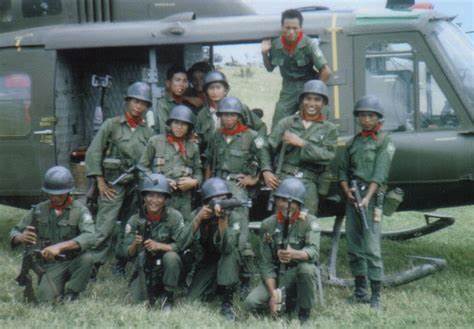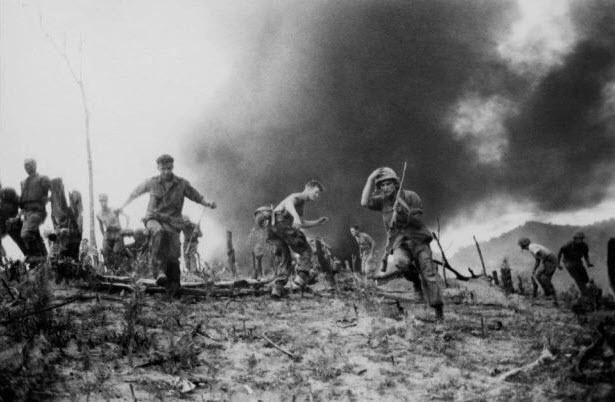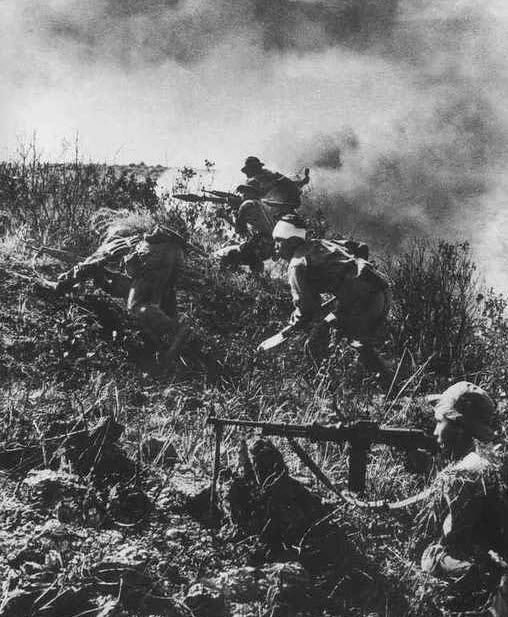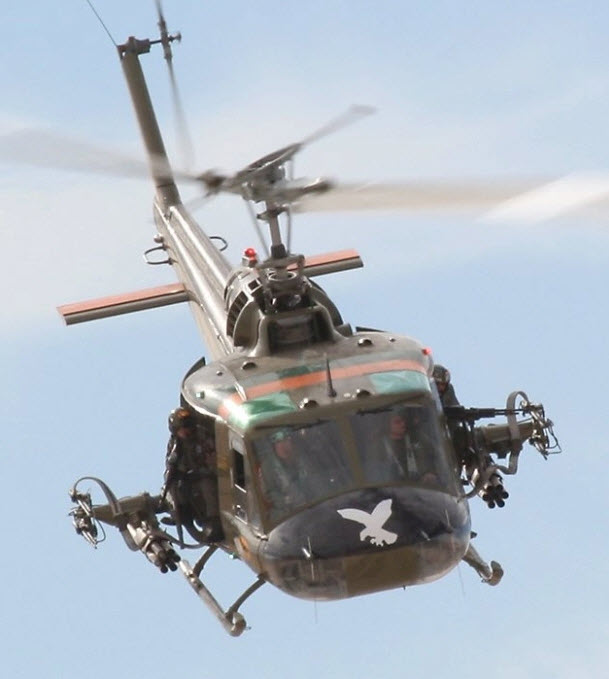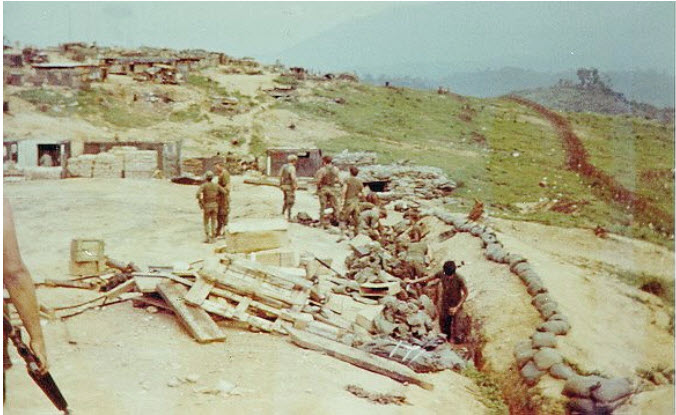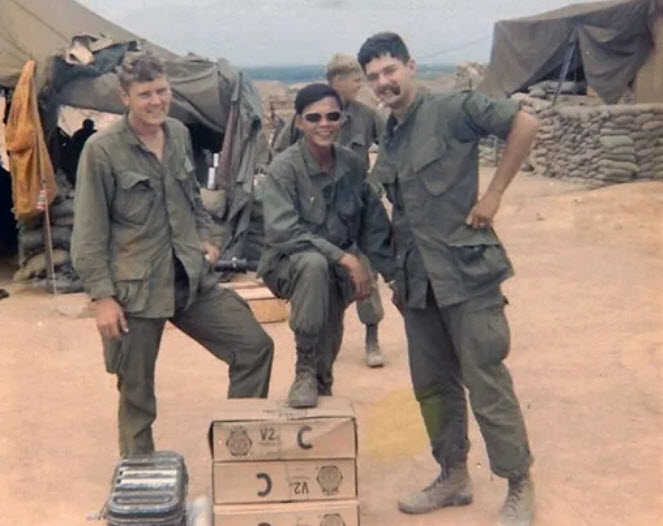Ok, so the Russians make a move that they were forced into by the United States. Of course the USA knew what it was doing. Every American knows about the “Cuban Missile Crisis”.
To pretend that it doesn’t is ridiculous.
If you place, or threaten to place, nuclear weapons on the border of a major nation, you can expect CERTAINLY a series of responses.
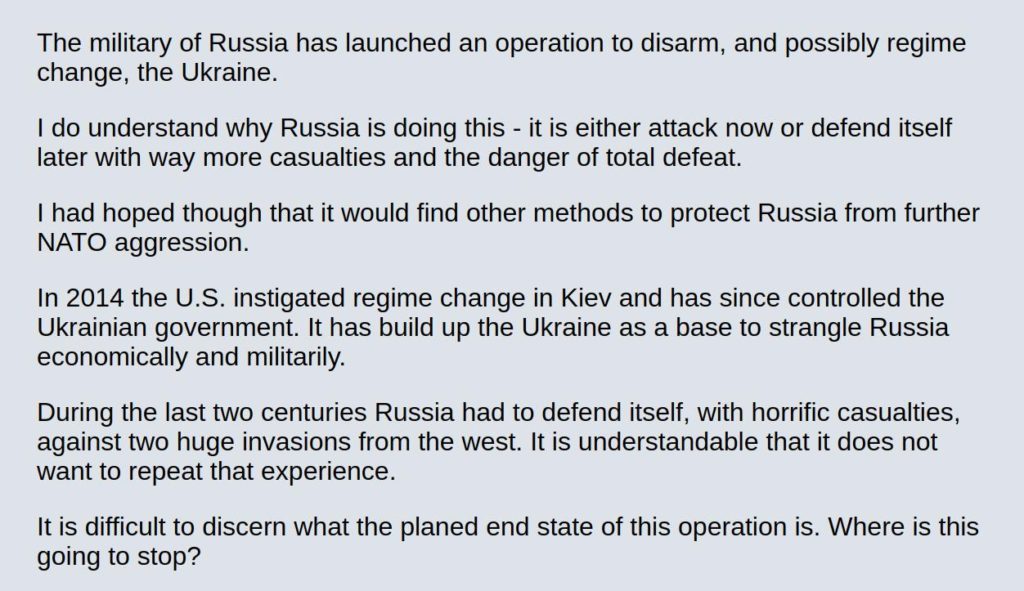
This is exactly what happened, but of course, it’s not being reported this way in the American / British “news”. According to that “news”, the Russians are taking a beating by the proud and brave Ukranians.
Russia facing more resistance than it expected!
Putin's losses now stand at 2,800 troops...
Readies 'father of all bombs'...
Hero Ukrainian soldier blows himself up to destroy bridge...
Chernobyl radiation levels rising...
US intel predicted invasion plans. Did it matter?
More than 50,000 flee in 48 hours...
Jews seek refuge in synagogues...
Europe says it has 'financial nuclear weapon'. But uncertain if it wants to use it...
SKYNEWS LIVE...
And then we have these…
- Putin gets a fight (NY Post) Heh heh.
- Pilot credited with shooting down seven Russian Jets (Washington Examiner)
Seven, eh?
So, I go on LinkedIN, and other other mainstream media, and Lordy! It’s all about the brave Ukranians fighting the evil communists. Sheech! Talk about spinning a narrative! So here, we are going to put some perspectives in place and then resume business as usual.
This is a fine meandering article hosting a wide selection of rambling thoughts and interests. Remember, don’t look at one singular issue and study it. Look at the big picture, as that is how everything is actually connected.
First, a look at a map…
Did you know that the Ukraine is the fourth-largest recipient of American equipment and weapons in the world? Imagine that.
Why? Why in Good God’s name, why?
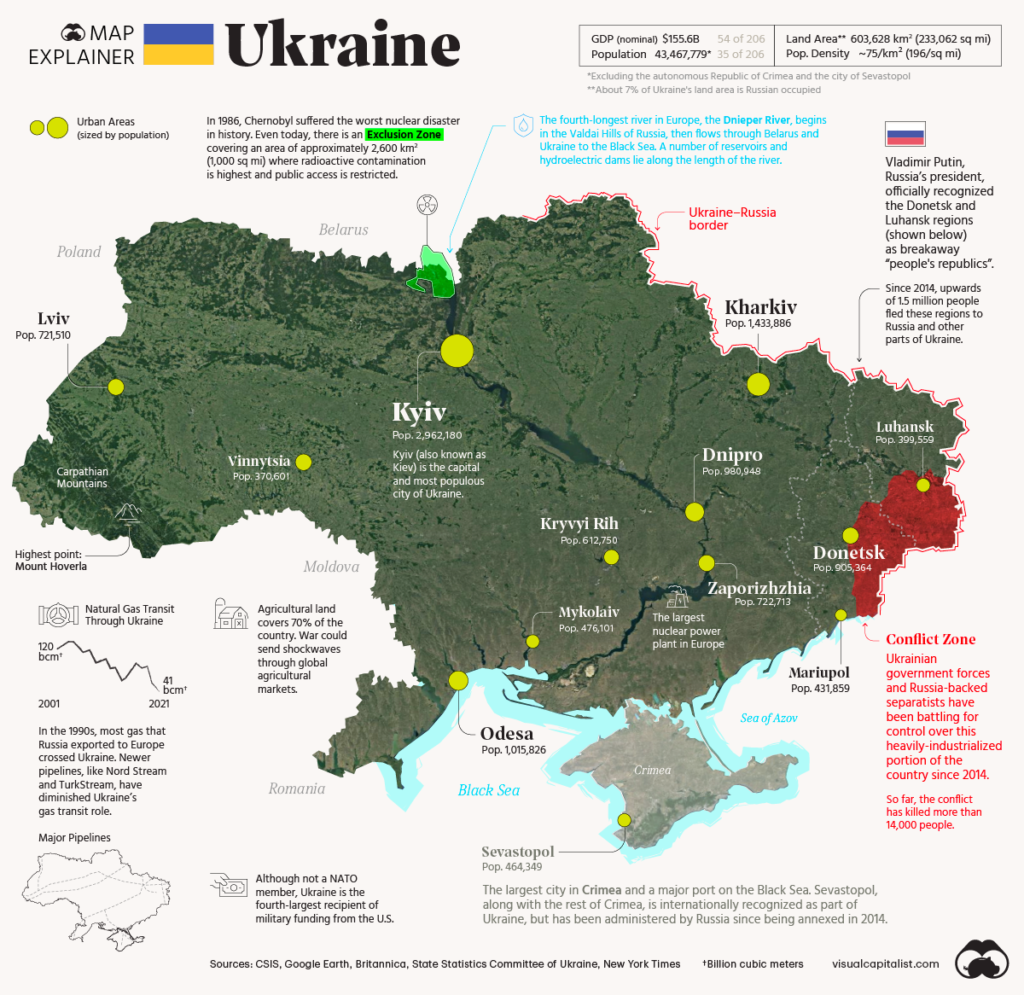
Now, we begin with a statement that The Domain Commander made; “We are striving for little bads, so we can avoid the Big Bads”…
Nuclear Weapons in the Ukraine
Here is the link for the quotes:
President Putin didn’t spark World War III, he just averted it
A much larger war that could dangerously escalate into World War III was averted by Russia’s preemptive special operation in Ukraine aimed at neutralizing the US and NATO’s latent, imminent, and hot threats emanating from that country. This makes Moscow’s military mission truly a peacemaking one since the Eurasian Great Power responsibly sought to prevent World War III, not spark it. Russia truly had no choice but to act now.
The US-led Western Mainstream Media’s latest information warfare narrative against Russia is that President Putin just sparked World War III, but the reality is that he just averted it. The Russian leader’s address to his people on early Thursday morning made that abundantly clear and should be in full by those who truly want to know the truth about what just happened. As the author explained in his latest analyses about how “Russia’s ‘Shock & Awe’ Campaign In Ukraine Aims To Resolve The European Missile Crisis” and “Russia’s Special Operation In Ukraine Will Restore Global Strategic Stability“, as well as his piece “Tracing The Geostrategic Sequence Of The US’ Attempted Containment Of Russia“, the Eurasian Great Power is simply waging a preemptive war before the US’ planned World War III can begin.
In short, the US and its anti-Russian NATO allies were secretly establishing military facilities in Ukraine for launching their own impending war against that neighboring nuclear power. First, however, Washington wanted to neutralize Moscow’s nuclear second-strike capabilities through the regional deployment of “anti-missile systems” and strike weapons, including one day hypersonic missiles and even eventually to Ukraine itself too. This coincided with the US’ withdrawal from strategic arms pacts such as the Anti-Ballistic Missile (ABM) Treaty, the Intermediate-Range Nuclear Forces (INF) Treaty, and the Open Skies Treaty, all of which destabilized European security by making America’s military intentions all the more ambiguous to Russia.
President Putin’s speech from Monday evening when he announced his country’s recognition of the Donbass Republics saw him meticulously detail the existential nature of the threat that the US and NATO’s secret military infrastructure in Ukraine poses to Russia. He described their airfields, bases, and ports in the country that he warned will soon be used to strike his own, albeit after first presumably neutralizing its nuclear second-strike capabilities. Thursday morning’s speech compared post-Soviet Russia’s three-decade-long appeasement of US-led NATO to Stalin’s pre-World War II appeasement of Nazi Germany, declaring that “We will not make this mistake the second time. We have no right to do so. Those who aspire to global dominance have publicly designated Russia as their enemy.”
According to Russian intelligence, “If we look at the sequence of events and the incoming reports, the showdown between Russia and these forces cannot be avoided. It is only a matter of time. They are getting ready and waiting for the right moment.” “They did not leave us any other option for defending Russia and our people, other than the one we are forced to use today”, President Putin revealed, which is why “In these circumstances, we have to take bold and immediate action.” He then issued what’s widely interpreted as a nuclear warning to NATO: “No matter who tries to stand in our way or all the more so create threats for our country and our people, they must know that Russia will respond immediately, and the consequences will be such as you have never seen in your entire history.”
It’s for all of these reasons that Russian Foreign Ministry spokeswoman Maria Zakharova clarified that “It’s not a beginning of war, it is prevention of a situation that could lead to global military confrontation.” What she meant was exactly what President Putin himself had said, namely that a much larger war that could dangerously escalate into World War III was averted by Russia’s preemptive special operation in Ukraine aimed at neutralizing the US and NATO’s latent, imminent, and hot threats emanating from that country. This makes Moscow’s military mission truly a peacemaking one since the Eurasian Great Power responsibly sought to prevent World War III, not spark it. Russia truly had no choice but to act now.
That’s because President Putin also revealed on Thursday morning that “Even now, with NATO’s eastward expansion the situation for Russia has been becoming worse and more dangerous by the year.” As he put it, “It is a fact that over the past 30 years we have been patiently trying to come to an agreement with the leading NATO countries regarding the principles of equal and indivisible security in Europe. In response to our proposals, we invariably faced either cynical deception and lies or attempts at pressure and blackmail, while the North Atlantic alliance continued to expand despite our protests and concerns. Its military machine is moving and, as I said, is approaching our very border.” It’s therefore understandable why Russia finally had to act.
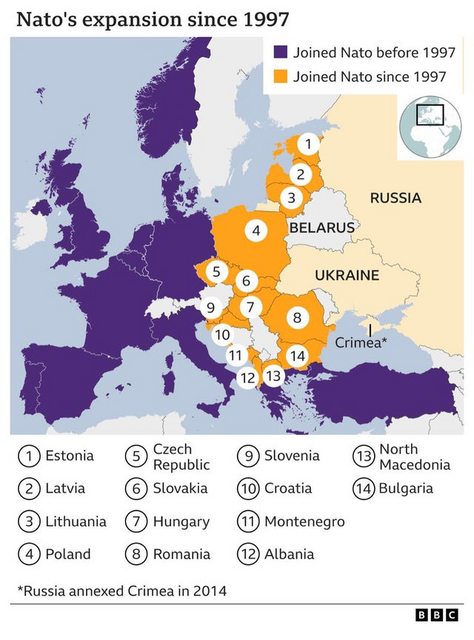
After all, President Putin already made his back-up plan known on 21 December when speaking at an “Expanded Meeting Of The Defense Ministry Board“. At that time, he said that “what they are doing, or trying or planning to do in Ukraine, is not happening thousands of kilometres away from our national border. It is on the doorstep of our house. They must understand that we simply have nowhere further to retreat to.” That event coincided with Russia’s publication of its security guarantee requests to the US and NATO for ensuring the integrity of its national security red lines. Moscow asked for legal guarantees halting the bloc’s continual eastward expansion, the removal of strike weapons from Russia’s borders, and a return to the continental military status quo enshrined in the now-defunct 1997 Russian-NATO Founding Act. Regrettably, the US-led West rebuffed the last chance for a diplomatic solution.
Had Russia not acted when it did on Thursday, it’s very likely that the US would have used the pretext of the third round of civil war hostilities that it encouraged Kiev to provoke last weekend in Eastern Ukraine to deploy strikes to that country on an emergency basis under the false pretext of “defending” it when in reality it would all be about clandestinely seeking to worsen Russia’s security as explained. President Putin therefore had no choice but to commence his military’s special operation in Ukraine on Thursday morning, which arguably averted the Third World War that would have inevitably followed with time had Russia continued to appease the US, seeing as how that nuclear superpower was never sincere about respecting its counterpart’s national security red lines.
And now time for a pretty girl
I really like her top with the chain metal fringes on the sleeves. Pretty hot.
Expulsion from Swift
The threat of expulsion from SWIFT as a deterrent to war is a “paper tiger” and fintech helped.
The nightmare of another European war is upon us and the non-military deterrent of being cut off from the SWIFT currency transfer system seems toothless. A paper tiger.
Ever since Iran’s SWIFT cut-off in 2012 US and EU policymakers have wielded the threat of a SWIFT cut-off like a sword. Now it seems throwing Russia’s 1.7% of global GDP off of SWIFT is unpalatable.
Let’s look at why. The biggest reason is energy but the others are tech-based:
1️⃣ G7 officials made it clear that they were reluctant to expel Russia because it would make it impossible to pay for Russian energy, leaving Europe in the dark and paying more. This is the clearest and most compelling reason not to cut off Russia.
2️⃣ SWIFT expulsion is not guaranteed to stop cash flows. SWIFT is merely a messaging system, it doesn’t move money. Anyone following China-Iran trade can attest that a cut-off doesn’t stop trade, so much as make it more expensive. Iran has perfected barter and international digital goods trading off of SWIFT.
3️⃣ China’s “Cross-Border International Payment System (CIPS) started in 2015 as a SWIFT alternative. It now has 1,186 financial institutions in 100 countries signed up. Russia has access to CIPS and while not ideal there is nothing preventing Russia from using the system and RMB in lieu of dollars. China built CIPS, following Iran’s cut-off for exactly this purpose. Russia’s equivalent SPFS system is simply too small.
4️⃣ Crypto is not yet ready to take over a meaningful amount of Russia’s $670+ bn in combined imports and exports but it doesn’t have to. If CIPS and other options above are put to use crypto can likely help small businesses move money across borders to keep things running.
Stablecoin tether was already illegally used in trade between China and Russia in 2019 with flows of up to $10-30mn a day. This is new territory, but I think we should not underestimate crypto’s capabilities. They may surprise us.
5️⃣ The digital Ruble, is in testing and perhaps within a few months, it could be rushed into production. Digital yuan-ruble trade is already in discussion. Russia may convince other countries to accept a digital ruble in trade. The recipients won’t need a CBDC themselves, just a digital ledger at the central bank to avoid SWIFT.
War causes change at a shocking pace. All of these SWIFT alternatives shift money out of dollars. De-dollarization is a trend the US doesn’t want to accelerate and why the US will not push in earnest for a SWIFT cut-off.
Fintech is now a pawn in the great geopolitical game. Its role in turning the SWIFT deterrent into a paper tiger is no small feat.
A great discussion about the Ukraine on You-tube…
It’s pretty good, and it goes in great deal about the history about what is going on.
Now for some very beautiful eyes
Yeah. I get it. Too many cute and beautiful girls. Well, I am in China. I can’t help it. I am surrounded by them. To understand China, is to understand beauty.
Social media giants will be forced to help users block trolls in new clampdown on poisonous posts
- Users will be able to block anonymous unverified accounts in a new crackdown
- These new measures have been added to the upcoming Online Safety Bill
- Individuals will be allowed to choose whether to join the verification process
Social media users will be given new powers to control who can interact with them under a major crackdown on hate-filled internet trolls.
Platforms like Facebook and Twitter will by law have to give users the tools to block anonymous unverified accounts.
Users will also be given the option to verify themselves. The onus will be on the firms to find a suitable verification method, but it could range from taking a selfie to providing proof of a passport or driving licence.
The new measures have been added to the upcoming Online Safety Bill, which will impose a duty of care on tech companies to protect users.
However, individuals will be allowed to choose whether to join the verification process – despite calls from some campaigners to make it a requirement.
Ministers were concerned it could jeopardise the safety of vulnerable users. Online anonymity can be crucial for domestic abuse victims, activists living in authoritarian countries and young people exploring their sexuality.
The Government has also announced a measure that will force platforms to provide adult users with tools to block ‘legal but harmful content’ such as racist abuse and Covid disinformation.
This could include allowing users to turn on settings that would stop them receiving recommendations on certain topics or place sensitivity screens over that content.
The Department for Digital, Culture, Media and Sport (DCMS) said the new measures would ‘put more power in the hands’ of social media users by giving them more choice over who they communicate with.
Digital Secretary Nadine Dorries said: ‘Tech firms have a responsibility to stop anonymous trolls polluting their platforms.
‘We have listened to calls for us to strengthen our new online safety laws and are announcing new measures to put greater power in the hands of social media users themselves.
‘People will now have more control over who can contact them and be able to stop the tidal wave of hate served up to them by rogue algorithms.’
It comes after calls from MPs, footballers and celebrities to take action on internet trolls after highlighting the horrific abuse they suffered.
The Government has already announced tougher punishments for trolls, with those found guilty of the worst abuse facing up to five years in prison under the new Bill.
The latest measures will only apply to the biggest social media platforms deemed ‘category one’ such as Facebook, Twitter and Instagram as they pose the severest risk.
Watchdog Ofcom will be given the power to fine them up to 10 per cent of annual global turnover for any breach or even block the sites from being used in the UK.
A DCMS spokesman said of the new measures: ‘While this will not prevent anonymous trolls posting abusive content in the first place – providing it is legal and does not contravene the platform’s terms and conditions – it will stop victims being exposed to it and give them more control over their online experience.’
The Bill will also force social media giants to remove illegal content such as child sexual abuse imagery, the promotion of suicide, hate crimes and incitement to terrorism.
But there is a growing list of toxic content and behaviour on social media which falls below the threshold of a criminal offence which still causes significant harm.
The spokesman added: ‘Much of this is already expressly forbidden in social networks’ terms and conditions, but too often it is allowed to stay up.’ Firms will have to make tools available that will allow users to block this on news feeds.
And for MM here…
I am SERIOUSLY considering making everyone apply to comment. I have to verify their email, and I am considering interviewing everyone via skype as well. This should seriously, seriously CUT down on trolls.
And don’t give me that “free speech” speil. There is no “free speech” in MM land. You join a community, and we police that community. If you disfunctional, or sociopathic, we kill you off.
It’s really simple.
Here, we operate like the social clubs of yore. Like the “Polish Falcons”, “The Elks”, “The grand woodsmen”, and others. You apply to join, and you pay membership dues. And the community polices itself.
Why community? Well this is why…
Yes.
You are NOT alone. This is a community. And as members of that community, we all work together as one. Like they do in China. As this video clearly shows what happens to sociopaths and other people with strange mental illnesses.
Participation in your community is what a Rufus is all about. It is the heart beat a thumping that makes the community, safe, calm, kind, happy and secure. As this next video clearly shows…
A Rufus is not a spectator. It is not a bystander. It is not a passive consumer. A Rufus is a participant in the community. Watch how this Rufus leave the pack of bystanders and actually does something. What a Rufus!
The mood in the Ukraine
Ah. America and the EU do not look good.
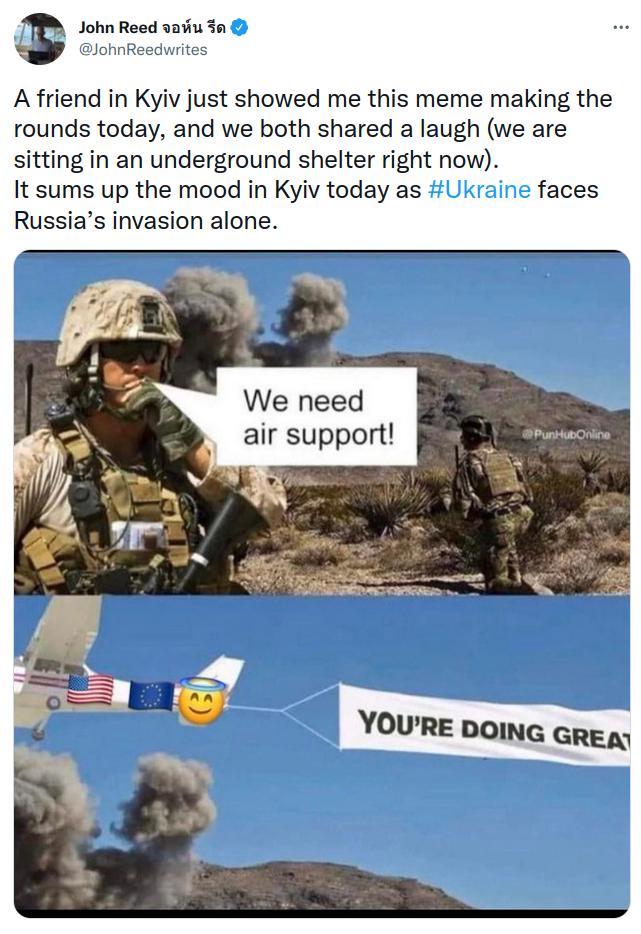
Girl in Shenzhen
I know this mall. It’s Coco park in Shenzhen. Some great restrurants, bars, and clothings shops. She’s nice. One of my favorites. She’s wearing a nice sweater. You can be very sexy and attractive without showing skin, don’t you know. All you need to do is feel relaxed and comfortable, and wear a big massive smile on your face.
About the capturing or destruction of equipment…
This is war, and it is in flux. There are going to be losses on all sides. Whether one side recaptures this, or shoots down that, has no meaning. The end result is what happens when the dust settles.

However, there are those that are trying to keep score. As if war is a tabulated war game. Here is a decent enough site in a flood of websites.
Keep in mind, though, that much of the digital evidence you see online is faked by amateurs. From Gizmodo:
Gizmodo has found at least ten viral photos and videos currently being spread on social media that are completely fake. In some cases, the videos and photos are years old. In others, the images are clearly not from Ukraine. There are even two examples of videos on Twitter today that are actually from war-themed video games.
Then, quis custodiet ipsos custodes? Neiman Labs has a list of resources for following the war.
But it hilariously lists Bellingcat, the Atlantic Council’s cut-out to the Intertubes, which is a lot like putting the American Council of Pork Producers in charge of censoring fact-checking information on swine fever.
Finally, some common sense suggestions:
Oh and yeah the @onthemedia user guides to breaking news. Read and obey. They're also more polite than I am. pic.twitter.com/KN0zXSKRAr
— Stilgherrian (@stilgherrian) February 24, 2022
Be careful out there.
Some context…
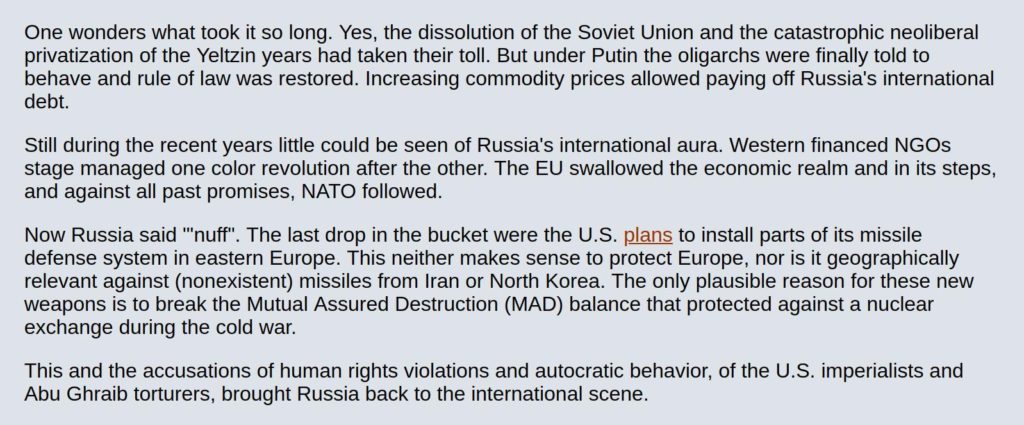
A Rufus is not a spectator
This is a community. If you are a Rufus, then you participate in it. You just cannot sit by and do nothing. We take action. For we are part of something greater. And for those who have volunteered to the Domain, know exactly what I am talking about.
Biolabs in the Ukraine

Russian operation in the Ukraine – end of day 2
Today was only day two of the Russian military operation. And yet, what a day it was!!!
First, a quick update on the progress of Russian forces. Here is a bulletpoint summary for today:
- Kherson: liberated
- Nikolaev: fighting taking pace in outskirts
- Konotop: taken by Russians
- Chernigov: blocked by all sides by Russian forces
- Melitopol: surrounded
- Mariupol: is under attack, street fighting
- Severodonetsk: under attack
- Kharkov: very heavy mopping up operation
- Suma: mopping up operations
- Kiev: blocked from the West and under attack, the authorities are distributing weapons
- Gostomel airport has been captured by Russian forces
- Zaporozhie: Russian forces expected there tomorrow
- A land corridor from Crimea to Russia should be opened by tomorrow.
- Odessa: big question mark – so far, not Russian attacks reported (that I know of!)
Now about Donetsk and Lugansk:
- Both cities are still under fire, and that goes to show that the advance of the LDNR forces has been slow, which is hardly surprising considering that the Ukronazis had 7 years to prepare their defenses. Still, things ARE getting better. Not only that, but the LDNR air defenses shot down a Ukie Tochka-U missile aimed at Donetsk. So it sure looks like the long awaited A2/AA “protective cupola” is being extended over the LDNR.
- That being said, the LDNR forces did break through in at least two directions today, which means that the life left for the Ukie artillery shelling the LDNR will soon come to an end.
But that does not really tell the full story. So I will try to clarify things a little.
A typical battalion has about 400-600 men, depending on the type. Let’s also assume that that battalion has 3-4 companies with APCs, a mortar battery, an air defense platoon, an automatic grenade launcher platoon, a signal platoon, supply platoon, and a few smaller more specialized subunits. If that battalion loses its APCs it has basically lost its most important source of firepower. If its communications are down (destroyed or jammed), then that battalion cannot operate as part of a bigger force and if its supply routes are cut, then its ability to operate (more or fire) will rapidly dwindle down. So, on paper this battalion will remain combat capable, but in reality it will have broken up and cannot be considered a truly combat capable battalion anymore.
So, to destroy/incapacitate a battalion only a few precision strikes are needed. Such strikes though, will leave most of the soldiers alive and quite capable of resistance, but not as a battalion anymore, but more like a typical infantry company or even squads armed with small arms, machine guns, PRG, mines, etc.. They cannot maneuver very much, but they can conduct small hit and run operations against the enemy force. Which means that specialized infantry/police forces must now be send to find these small forces and deal with them in potentially bloody mopping up operations.
Of course, rather than a few precision strikes, it is much more effective to strike the entire battalion with, say, MLRS strikes which will not only destroy most of the hardware, but which will kill most of the soldiers, especially if they did not prepare and seek cover. But that means 400-500 dead in one single strike. That is if this battalion is somewhere in the steppe. But if it is in downtown Mariupol such a strike will inevitably result in even more scores of dead civilians, especially since the Ukies are very careful to always position their artillery near or even on top of buildings.
Does Russia want that?
Not if there is ANY other option left.
Please keep in mind that Russia has the reconnaissance-fire complexes needed obliterate an entire battalion anywhere in the eastern Ukraine in one single salvo. They have deliberately NOT done so today (with one possible exception during the very heavy battle for the Gostomel airport, which was taken by Russian special forces and is now secured as a safe bridgehead for Russian Military-Transport aviation right next to Kiev).
Something similar can be seen in urban offensive operations. It is one thing to get to a city or town’s outskirts, and quite another to penetrate inside the city or town. If the city is lightly defended by small arms fire, that is one thing, but if the city is well defended, in specially engineered defensive circles, with minefield, IEDs, very strong building used as command posts and if the city’s houses and basements have been prepared by combat engineers, then it is much harder to take. Again, one option is to send it dedicated urban combat groups while the other is flatten any building which is used by the defenders as a fortress.
The Russian forces have the means to flatten any building anywhere in the Ukraine, including by cruise missiles, ballistic missiles, MLRS with cluster or fuel-air munition or by using howitzers, heavy mortars and even the TOS-1/TOS-1A heavy flamethrower multi-barrel rocket launch systems.
But, again, that can only be done at a major cost in human lives. Russians won’t hesitate to obliterate some Nazi deathsquads, but to massacre hundreds of regular Ukrainians, irrespective of their personal views, is only and truly a last resort option.
There is a lot of evidence that the Russian forces have moved into the outskirts of many Ukrainian towns, including Kiev, Mariupol and others. Here is how Russian military practice works:
- First, approach and try to block or surrender the city
- Second, suppress the main enemy firing positions
- Third, make sure that the city is truly blocked (except for a few special corridors, see below)
- Fourth, hold your position and reconnoiter the outermost enemy lines (by fire when appropriate)
- Fifth, send in special reconnaissance groups inside the city to observe and coordinate attacks
- Sixth, once the city is surrounded/blocked and once you get a pretty decent picture of what is inside you take the next decisions which might include any of the following: open corridors for civilians to flee and for military personnel to surrender and cross over, determine the main axes of attack and begin slowly grinding down the opposition with heavy firepower (artillery, air, missiles).
- Seventh, once the city’s defenses have been sufficiently disorganized, begin a house to house mopping up operation by specialized forces.
Before I go further, I want to remind you that during WWII the Soviet Military freed a whopping 1’200 (one thousand two hundred!) cities from the Nazi forces. Russians know how to do this better than anybody else.
Furthermore, during both Chechen wars, the Russians always managed to take Grozny, which was extremely heavily fortified and defended by some of the toughest fighters on the planet in spite of the fact that at that time the Russian army was it its lowest and badly disorganized, especially during the first Chechen war! But even in the first Chechen, the Russian did seize Grozny, twice, admittedly a huge cost (on both sides), but they did.
That was almost three decades ago.
Speaking of the Chechen war, in the first one the Russian military lost a big part of an entire brigade which had quickly entered the city, moved into the city center only to find itself surrounded and cut off, with terrible communications, quasi-non existing reconnaissance capabilities. That debacle left a very painful memory in the Russian collective memory and if somebody was expecting Russian APCs to reach the Mariupol or Kharkov at full speed with flags and screams of “hurrah!” – they don’t understand what is taking place: the (truly criminal) mistake made by Eltin’s generals during that first Chechen war will never be repeated by modern Russian commanders.
Any defeat is always a terrible tragedy, the only and best thing anybody can do after a defeat is to understand why and how it happened, and never repeat such a (criminal) mistake again.
That is the true reason why today Russians stopped on the outskirts of so many cities.
The bottom line is this. These are things which the Russians are trying to achieve
- Destroy the Ukie armed forces but kill the absolute minimum number of Ukrainian soldiers (real Nazi will probably be destroyed no questions asked). Why? Because these surviving Ukrainian soldiers and officers are the ones who will play the main role in finally cleaning the Ukraine from the Nazi scum.
- Get to the outskirts of as many major Ukrainian cities and gradually begin the steps I outlined above.
- Convince civilians to flee and convince Ukrainian solders to lay down arms
- Delay any Russian penetration inside the cities until the moment is “just right” (not too early, not too late)
Why?
Because Russia has ZERO intention of occupying or, even less so, rebuild or police the Ukraine, that’s why. The LDNR (in its legal borders) is as far as the Russians will go (with only a few possible exceptions).
The Kremlin decided that the goal of the operation was to 1) disarm and 2) to denazify the Ukraine. As soon as these goals are reached, the Russian want to get the hell out of the Ukraine and back into the LDNR and let the Ukrainians fight their own anti-Nazi civil war. That means that:
- The Russians now must identify reasonable Ukrainian commanders and/or politicians to negotiate with
- That Russia needs to offer the leftover Ukrainian ground forces the same deal which the Ukrainian forces which were tasked with the control of the Chernobyl nuclear planet were given today by the Russian forces: let’s secure this facility together and keep it secure together, with no combats of any kind. The Ukrainians gladly accepted, by the way, and now they are jointly patrolling area.
- The Russian might also try something which worked well in Chechnia: tell the local town/city authorities that if they guarantee that not a single bullet will be fire from that town/city not a single Russian bullet will fly back and not a single Russian solider will enter the city, unless accompanied by locals and in order to ascertain the reality of the situation. But if a city is declared “open and peaceful” and then is used to attack Russian forces, it will be simply flattened with artillery. I call that the “Shamanov ultimatum” and, after a few false starts (and subsequently flattened towns) it worked very well.
The crucial factor is this: during the two Chechen wars or during 08.08.08 the Russians never saw the local people as their enemy and, if anything, they were hoping that the locals would start their own “housecleaning operation” which was a bad joke in the first Chechen war, but worked very well in the second Chechen war, and failed again during 08.08.08.
In military/combat terms the Ukies are much more similar to the Georgians than to the Chechens, so there is a good chance Russia might have to leave unconditionally and let the locals slug it at between each other for as much as they want (which is what Russia did in 08.08.08 even though Russia Airborne units were at the outskirts of Tbilissi).
Which brings me to THE QUESTION for tomorrow: how will the Ukrainian soldiers and civilians behave?
Right now, Ukrainian losses have been minimal (considering the undeniable fact that this is a fullscale strategic offensive), the Russian forces have reached their positions on the outskirts of many towns and tomorrow or the day after will be “decision time”.
I hope and pray that Russian and Ukrainian soldiers find a common language in as many locations as possible. Those who will chose a heroic stance (hardcore Nazis mostly) will be offered the possibility to die for their ideas.
In that context, “Ze” released a video in which he offered to negotiate directly and unconditionally, even about neutrality and any other topic. The Russian reply was simple and to the point:
- Russia is immediately ready to start negotiations after the Armed Forces of Ukraine lay down their arms.
- The Ukraine must be demilitarized and declared neutral.
- The Ukraine must be denazified.
- Russia will no longer allow the Nazis to rule in Ukraine. Ever.
After that reply, “Ze” and his aides stopped communicating.
I personally doubt that he has any control over anything. And the fact that a huge amount of weapons has been distributed to whomever wanted one today in Kiev shows that “Ze”‘s handlers have given him the order to make the biggest possible mess and bloodbath before he is evacuated.
This is very sad, and utterly immoral, but there is nothing Russia can do about that: the Ukraine will be flooded by well armed criminals gangs and Nazi insurgents for years to come.
Putin today made a speech in which he suggested that Russia’s beef was only with the Nazis and their deathsquads but that Russia would seek to cooperate with the Ukrainian armed forces (well, what’s left of them, really) should they overthrow the Nazis. See his full message here.
So, today was “we get to our staging positions” day.
So what did not happen (yet)?
- The operational envelopment of the Ukrainian forces along the LOC with the LDNR forces has not happened yet, there is still a corridor by which these forces can withdraw. The Russian could have shut it down already “by maneuver by fire” but, apparently, they want to keep it open for a little longer.
- The Russian Black Sea fleet has not engaged in any major combat activities (that I know off, so take that with a grain of salt).
Will that happen tomorrow? Maybe, it all really depends on whether the regular Ukrainian units will agree to surrender or whether they will fight to their last solider. It also depends on how the Ukrainian civilians will react at the sight of approaching Russian forces.
So what to look for tomorrow?
- A further penetration of Russian forces deeper inside Ukie territory, with cities bypassed.
- The gradual penetration of Russian forces into blocked/surrounded cities
- The intervention of the Black Sea Fleet in combat operations (with maybe Odessa as a strategic target, not necessarily to take, but at least to threaten and weaken).
- A western false flag (some “Russian atrocity” no doubt)
One more thing:
Western PSYOPs are in “max attack mode” and they are being helped by Russian 5th columnist websites. For example, I was trying to find a halfway decent map of the combat operations today, and ALL the Russian websites which offered such maps were hardcore 5th element. Okay, I get it – 5th columnists don’t need any real facts to make their maps, while the real patriots are afraid of both getting it wrong and leaking info. Still, I remember during the first two wars in the Donbass, there were some pretty decent maps available out there.
Today I see such zero. If anybody can recommend semi-decent military maps of the combat operations I would be most grateful.
The fact that the Russian 5th column is allowed to continue to operate the way it does really frustrates me. Could the Kremlin not tell them to “zip it” at least during active combat operations?
I did not even bother checking the output of the 6th column today, I fully expect it to be indistinguishable from the output of the 5th, and so I have no interest in it.
What is certain are two things: the joint efforts 5th and 6th column efforts have had some success, especially in locations where Putin his hated and pro-western views more common than in most of Russia. The best poll I have seen says “Three-quarters of the respondents rather support the decision of the President of Russia to recognize the independent Donetsk and Luhansk People’s Republics (73%), rather do not support – 16%, and every tenth Russian found it difficult to answer (11%). The majority of Russians – 78% – expressed support for the President’s decision to sign an agreement on friendship, cooperation and mutual assistance between Russia and the Donetsk and Luhansk People’s Republics. Rather, 14% of respondents do not support this decision“. Putin personal rating is at 67,2%.
My guesstimate that no more than 5% of Russian support the 5th column and not more than 15% support the 6th column. Toss in another 5-10% which is afraid and on the fence. This is only a guess following my readings of the Russian social media, not a precise figure or even one based on serious research!
Next, the main thesis of US PSYOPs today was “the Russian movement is very slow, much slower than expected” hinting at some formidable Ukrainian defense operations. I hope that while I did not post any maps today, the above will tell you all you need to know to identify this thesis for what it is: western information operations, nothing more. The problem is that there is no “smartphone confirmation” of any of that, and by tomorrow I expect the main western PSYOPs thesis to change from “no/slow advance” to “Russian atrocities” (the smartphone coverage for that will, of course, be provided by the western press corps).
So, in conclusion, and once more – the “fog of war” is real, and to read through it takes both time and experience. By tomorrow, I only expect this “fog of war” (powerfully augmented by PSYOPs) to drown us all in all sorts of nonsense, rumors and wild claims. Again, please don’t post panicked questions such as “is it true that the Ukrainian forces are already on the Red Square in Moscow” or something equally insipid.
Two quick ones just in, then I need to crash (sorry, I am exhausted).
The US decided to impose personal sanctions personally on Putin (and others) which will result in a full termination of any diplomatic relations (as Russians warned the US many times). Note: such sanctions are entirely symbolic but maximally offensive, so a full break with Russia is what the US wants.
Twelve thousand Chechens will be sent to the LDNR if needed, so promised Ramzan Kadyrov, the President of Chechnia. Actually, I think that this is a very good idea, like in Syria, the Chechens should get involved in policing and public security operations. FYI – when the “toughest” and “NATO trained and equipped” Georgian brigade heard that the Chechen battalion Vostok was approaching, they all ran abandoning all their fancy (and secret) equipment. Russia then organized exhibits of all that NATO kit.
Today, the LDNR authorities report the seizure of large Ukie weapons depots including the famous Javelins and NLAWs. This is all very good news.
MM video
I took this video from inside a DD (Chinese version of Uber). It depicts where I live in JiDa in Zhuhai, China. Sure it’s sideways, but well, not too much I can do about that now.
How to train your cat to walk on a leash
It’s crazy it seems, but necessary if you live in an urban area and want to take him / her out into nature. video 35MB
Moscow: War in Ukraine started 8 years ago, Russia is now ending it
RT from HERE
Russia’s Foreign Ministry says it wants to end the 8-year bloodbath in Donbass that both Ukraine and the West turned a blind eye to.
The West spent eight years ignoring the “sea of blood” in Donbass while arming Ukraine, and now claims Moscow is the aggressor when it stepped in to end the conflict, Russian Foreign Ministry spokeswoman Maria Zakharova told RT on Thursday.
Russian President Vladimir Putin announced a military operation in Ukraine in the early hours of Thursday, claiming it was necessary to “demilitarize and de-nazify” the neighbor. Kiev accused Russia of aggression, while the US, EU and NATO have called it an “unprovoked” invasion. Moscow insists this is not the case.
In announcing the operation, Putin said the “main objective is to stop the escalation of the war that’s been going on for eight years, and to stop the war,” Zakharova told RT in an exclusive interview.
“Russia did not commit aggression of any kind,” Zakharova insisted. “This did not start yesterday. There’s a sea of blood that’s appeared over the past 8 years,” she added, referring to the conflict in the Donetsk and Lugansk regions, which Russia on Monday recognized as independent states.
The main aim is to stop the escalation of the war that's been going on for eight years, to stop this war
Donetsk and Lugansk broke away from Ukraine in 2014, after the West-backed coup ousted the democratically elected government in Kiev. Zakharova noted that the two self-proclaimed republics held a referendum eight years ago, saying they did not want to remain in Ukraine, but both Moscow and the West rejected this and tried to put the “broken” country back together.
When asked about President Volodymyr Zelensky’s statement that Ukraine wanted peace, Zakharova wondered why Ukraine was arming itself and refusing to negotiate with the Donbass.
“If Ukraine wanted peace, why did they get all these weapons” from all over the world, the Foreign Ministry spokeswoman told RT, adding, “It was clear that these were offensive weapons. Who were they fighting? Their own people in southeast Ukraine, and spoke often about seizing Crimea.”
The peninsula voted to rejoin Russia in March 2014, but Ukraine and its Western backers have refused to recognize this, calling it an “annexation.”
Zakharova also noted that the top Ukrainian officials have openly and publicly brought up the idea of obtaining nuclear weapons in recent weeks, pointing out this was a fact and not something claimed by Russian intelligence.
Divisions in Ukraine go beyond Donetsk and Lugansk, Zakharova added, accusing armed groups with Nazi-era symbols – such as the notorious Azov Battalion – of having influence over much of the country.
For years, she said, Western media so concerned over human rights in places like South Sudan and Myanmar kept silent on all this, ignoring that more than 13,000 people have died in the Donbass – many of them civilians. While Russia provided them with humanitarian aid, Kiev besieged them by cutting off trade, finance, and even utilities. Zakharova noted that the water canal towards Crimea is now once again operational after Ukraine “criminally” shut it off years ago.
Community
It’s not about individual “freedom” and allowing the sick, evil and malovent to hijack a forum. It’s about community. Community. You have a choice. you can sit behind your computer in a grey cubicle and shout your opinions anomously, or you can participate in a community as an accepted member. It your choice.
Community. Nonexistent in the USA.
THE BODY LANGUAGE OF THE SPEECH — PUTIN HAS REPUDIATED LENIN, STALIN, GORBACHEV, YELTSIN & MOBILIZED RUSSIA’S DEFENCE AGAINST US ATTACK AS NEVER BEFORE
From HERE.
by John Helmer, Moscow
@bears_with
Not in his entire life has President Vladimir Putin made a speech like Monday’s Donbass address to the Russian people.
Nor has he ever named the Americans to be Russia’s national enemy in such unequivocal Russian terms – American promises worthless, American intentions deadly, American speeches lies, American actions intimidation, extortion, blackmail.
“So I want to ask”, Putin said: “why, why all this, for what? Okay, you don’t want to see us as a friend and ally, but why make us an enemy? There is only one answer: it’s not about our political regime, it’s not about anything else, they just don’t need such a large independent country as Russia. That’s the answer to all the questions. This is the source of traditional American policy towards Russia.”
“The pretext for another sanctions attack will always be found or simply fabricated, regardless of the situation in Ukraine. There is only one goal – to restrain the development of Russia. And they will do it as they did before, even without any formal pretext at all, just because we are and will never give up our sovereignty, national interests and our values.”
Unlike the most famous of English and American mobilization speeches against French, German and Confederate enemies – King Henry’s Agincourt, Winston Churchill’s Dunkirk, and Abraham Lincoln’s Gettysburg speeches – Putin didn’t wave his arms or move significantly his head, neck, shoulders, or right hand. Putin’s right hand is the operational one.
Watch and listen. The stillness of the body language, the pauses for breathing, the speech pitch, pace and modulation – these mean to all Russians: Do or die — now we do for ourselves or else the Americans will kill us.
Putin spoke for 55 minutes, 48 seconds – Shakespeare’s Henry V spoke for just over two minutes; Lincoln for less than that; Churchill for 20 minutes.
The Pentagon has been using body language and voice techniques to spy on Putin for years. Timothy Colton, the US Naval War College agent doubling as a Harvard professor, was exposed in 2015 after several years of paid secret work; read the details here.
Colton has also been the biographer of Boris Yeltsin, a work celebrated as a “masterpiece” by the US officials who once controlled Yeltsin. Yeltsin was unnamed in Putin’s speech, but all Russian listeners understand that he was meant in Putin’s accusations of “historic, strategic mistakes”, “pandering to the ambitions of the nationalist elites”; “injustices, lies and outright pillage.”
“Against the backdrop of the superficial and populist rhetoric about democracy and a bright future based either on a market or a planned economy, but amid a true impoverishment of people and widespread shortages, no one among the powers that be was thinking about the inevitable tragic consequences for the country… The collapse of the historical Russia known as the USSR is on their conscience.” For “market” Putin means the Yeltsin group, the two ranking officials who belong to it – Anatoly Chubais and Alexei Kudrin — are still alive, along with the oligarchs they created. For “planned economy” Putin refers to Mikhail Gorbachev whom he has condemned as well. For “conscience” Putin means hypocrisy.
The qualifier: “Of course, we cannot change past events, but we must at least admit them openly and honestly, without any reservations or politicking. Personally, I can add that no political factors, however impressive or profitable they may seem at any given moment, can or may be used as the fundamental principles of statehood. I am not trying to put the blame on anyone.”
Analysis of Putin’s body language and verbal cues on behalf of the secret services by Colton and his colleagues has not discouraged the hospitality which has been shown to Colton by the Valdai Club, the Kremlin-financed platform. The reason Putin has just announced openly. For the traditional American reason the Russian command believes Colton’s capacity to threaten is limited by his incapacity to comprehend.
Count Putin’s head, neck, and shoulder movements and measure them against the vertical and horizontal axes. Head movements left and right are restricted within 5 degrees of the vertical; there is almost no kinesis of the head forward or back; no neck rotation; and apart from a couple of left shrugs, Putin’s shoulders remain immobile and at rest on the horizontal for all 55 minutes. This is an unusually long time.
Movement psychologists diagnose these features as indicating on the one hand a combination of internal control and confidence in what is being said; on the other hand, the commitment to reassure the listener.
Putin does not stumble in speech, mispronounce or misread his teleprompter lines. Speaking without a glass of water for an hour, he clears his throat very rarely. His breathing intakes are short, regular, and without the diaphragmatic discipline of the Stanislavsky stage method; in short, natural. The pitch and modulation of his voice remain steady without many peaks of emphasis or emotion. But the president does something he has exhibited very rarely — he breathes out in audible sighs. This is a display of regret, sadness. For the Russian audience this is attractive because it is human.
For his emphases Putin employs as few of his moving parts as he can. This signifies a high degree of self-control without nervousness. Instead, he uses his hands, the right more than the left, to anchor his body. When he wants to underline a verbal point, there is no agitation of the arms nor tension in the fingers on the table. His gestures – either single-handed or double-handed – illustrate the military threats Putin is discussing from the US, the NATO alliance, and from Ukrainian territory.

The last time the United States faced an enemy as calm, unmoving, disciplined, and confident was in the Vietnam War. Secretary of State Antony Blinken and deputy Victoria Nuland were less than eight years old at the time; National Security Advisor Jake Sullivan had not been born.
Oh, and speaking about Taiwan…
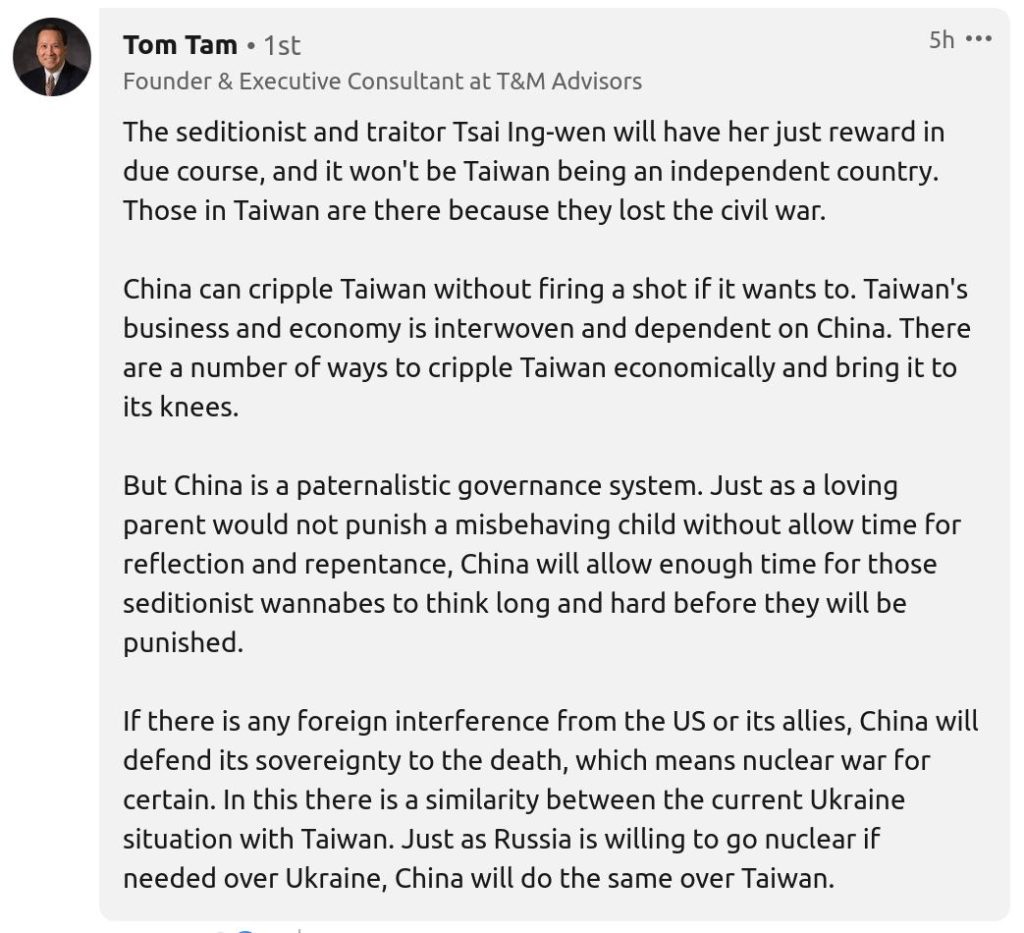
And about China’s defenses regarding Taiwan…
AI controlled Chinese Robotic bombs are swimming independently all over the South China Sea. Collecting info, and ready to detonate upon command. Video 6MB
Chinese Naval Aviation. I wonder if CNN, BBC, or FOX “news” would ever show these kinds of videos. Video 7MB
How community works
This is what happens inside of China. It is a nation that values community, and that does not tolerate social misfits. And Trolls are mentally ill social misfits. That’s WHY they hide their true names, faces, appearance, and location.
Then (supposedly) hidden they cause saddness, interruptions and sow disgust.
This is unaccceptable inside of China, and China is very strict about putting these misfits out of society. Instead they provide them with meaningful labor, in well structured environments where their social skills are allowed to gorw and mature until one day then can return back into that community.
Community. Without it, you are just a loney, solitary misfit.
That video made me hungry…
Chicken a la King

When was the last time you ate this delicious dish?
My guess is that you must have eaten at least 300 buckets of KFC chicken since then. So much, that you (and the rest of society) has forgotten that there as so many ways to cook chicken, and deep frying it is only one such way.
Chicken a la King took the United States by storm in the middle of the 20th century. But if you try to find it on a dinner menu these days, you probably won’t have much luck.
By embracing this dish, featuring cubed chicken with a cream sauce served over your favorite grain (rice, noodles or bread), you’ll get to taste what made this chicken recipe such a classic and maybe even discover your next favorite meal.
Get the recipe from Taste and Tell.
This girl is so very comfortable
In her own skin, don’t you know. LOL. She does need to smile. I am not overly fond of the “pouty, spoiled teenager” look.
Girl inside a Chinese “Wet Market”
Remember the onslaught of lies trying to pin Coronavirus on the Chinaese because of unhealthy habits, filth and dirt at a Wet Market. Yet, no one ever showed images of what a Wet Market looks like. Well, here is what it looks like.
Russian bear wants justice
by Batko Milacic
Despite possible sanctions and their hard-hitting economic consequences, the hunted Russian bear has got out of the den and is going after the hunters. Until recently, Russians, Ukrainians, and Europeans believed that there would be no war.
What we see now, however, is a full-scale Russian intervention and quite a successful one too. Where are the Russian troops going, and most importantly, why? And where will they stop?
Strengthened since the breakup of the Soviet Union, Russia was quite content with its new status of a leading regional power, and only verbally recalled its glorious imperial past. During the early 2000s, Russia even mulled the possibility of integrating into NATO and the EU, only to see its natural and legitimate interests repeatedly and shamelessly ignored. Millions of Russian-speakers living in the post-Soviet republics were deprived of their right to use their native language, while the Baltic countries and Ukraine profited from the transit of gas, oil, and raw materials. There was even a new “policy of gas pipelines,” when Russia was pressured into make concessions in exchange for being allowed to build a gas pipeline or simply put a stop to the syphoning off of its pipeline gas.
In fact, a resurgent Russia was gradually being presented as a “potential enemy” for the sake of reiterating NATO’s role as a defender against the imagined Russian threat. All this resulted in the 2013 events in Ukraine where nationalists came to power not without outside help, flatly refusing to safeguard the interests of the country’s Russian-speaking population, primarily in eastern Ukraine. Facing the risk of losing its naval base in Sevastopol (existing there since the 18th century) and wishing to protect the Russian-speaking people living in Ukraine, Russia, with the full support of the local population, re-absorbed Crimea and supported the separatists of Donbass. This was followed by Kiev’s ban on the use of the Russian language in the country (not entirely successful, though, since it was the main spoken language of Ukraine) and police persecution of those who advocated a dialogue with Moscow. In its effort to support Ukraine, the West introduced a series of anti-Russian sanctions, which seriously damaged the Russian economy. Still, for the past eight years, Russia was ready for dialogue. In exchange for autonomy for Russian-speakers and guarantees of non-deployment of a NATO infrastructure in eastern Ukraine, Moscow was prepared to roll back its support for the separatists and, possibly, even hold a new referendum in Crimea on its reunification with Russia.
However, during all these eight years, people continued to die along the disengagement line in Donbass, separating Kiev’s armed forces and the separatists (at the rate of more than 100 a year). Meanwhile, Russia was officially branded by Kiev as an “aggressor,” and those in power in Ukraine started to busily prepare for a big war, demanding military and financial assistance from the EU and Washington. And while President Zelensky’s predecessor, the millionaire Petro Poroshenko, was still able to maintain a dialogue with Moscow with the help of the oligarchs, the current president, who came to power on the strength of promises to seek peace and reconciliation, was trying hard to enter NATO and was threatening Russia with missiles deployed near Chernigov (750 km from Moscow). As for the Kremlin, it has spent the past six months trying to negotiate with Brussels, Washington and Zelensky himself. All that Putin was asking for were security guarantees for Russia. In fact, Moscow never really threatened Ukraine but was still being systematically pushed towards a military solution.
It should be noted that prior to the intervention, Putin explained in great detail to his compatriots what was going on, recalling how the borders of the Soviet republics had been cut and how Russian-speaking territories had been handed over to Ukraine. He also made it clear that one cannot talk about a violation of international law after the invasion of Iraq, the bombing of Serbia, the recognition of Kosovo and NATO’s move to the Russian borders.
Let’s be honest: a bear sleeping peacefully in its den was smoked out of there by being poked with a stick, and now they are wondering why it is chasing those who did that. Moscow has been pushed into a corner and is now demonstrating its strength and standing up for its interests. Now Putin will at best be satisfied with a change of guard in Kiev, and at worst, Ukraine as a state will disappear from the map of Europe. Is it possible to justify an aggression that has been provoked for a long time? This is a matter of a lengthy discussion. One thing is clear: 20 years ago, Russia could and wanted to join NATO and united Europe. However, the latter chose to make Russia an enemy…
Pick a side
I have recounted how various “experts” are advising Washington DC to sanction China along with Russia. They argue that since the USA controls the money supply and debt that countries would “of course” choose America over China. I argue otherwise. Where are people going to get things?
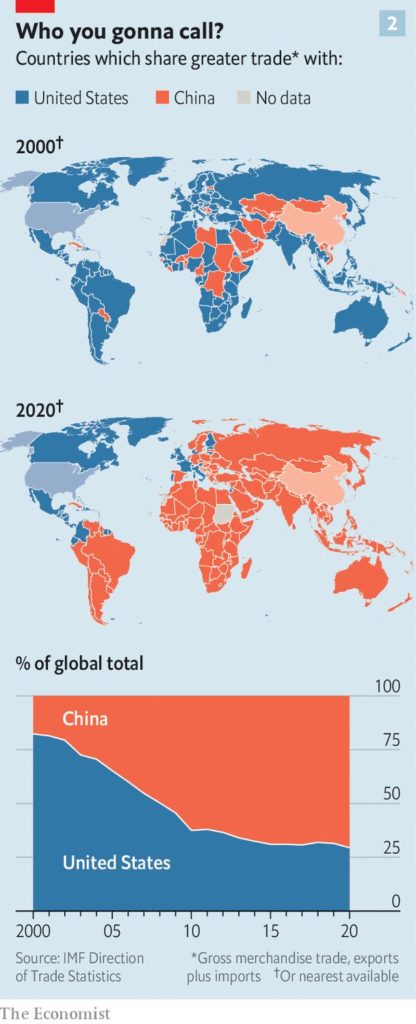
And concerning China…
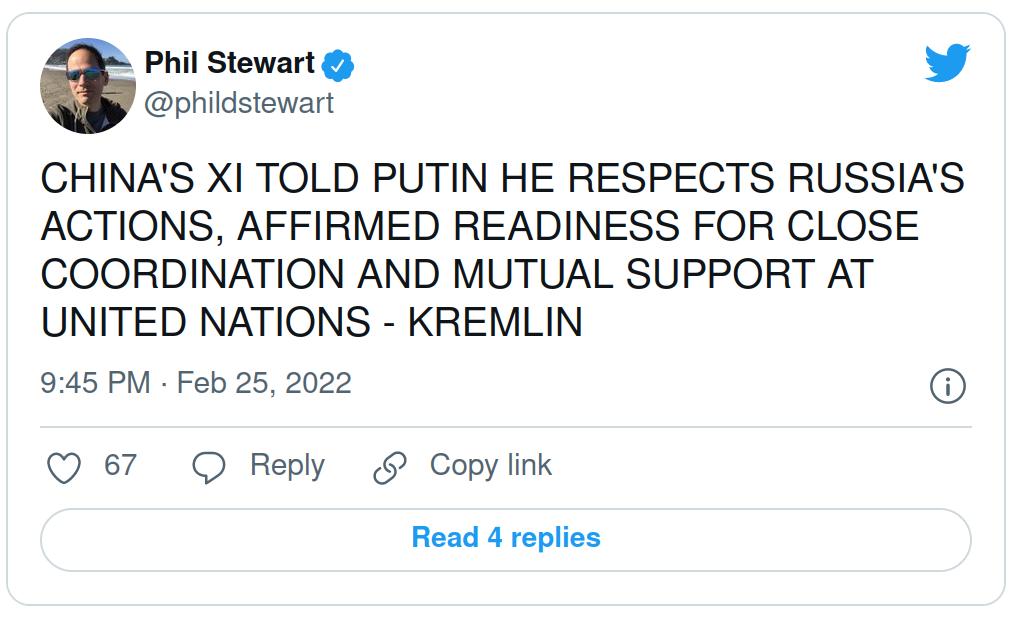
A reminder that China DOES NOT PLAY
Like Russia, China has a ferocious military. Military training starts in first grade, however, certain kindergarden schools also start the tykes early as well. Marching, rules of organization are taught in first grade. Third grade you have field stripping of firearms, small arms training, and mortar fire.
China has a population of merit driven, determined soldiers of 1.6 billion people. Someone should slap the American neocons ont he side of the head and remind them that both China and Russia are decendents of Genghis Khan.
Little tykes. Video
First Grade training 1. video 9MB
First grade training 2. video 9MB
Fall in love with Chinese girls
This is what it is like for me all the time. It’s so nice living in Mayberry RFD.
Day 2 of the Russian operation in the Ukraine
Today is a major day in the Russian military operation. Why?
Because Russian forces are now on the outskirts of many major Ukrainian cities. If yesterday was “standoff weapons” day, today is the first day when Russian forces can now begin to degrade Ukrainian artillery dispositions, engage Ukie armor and break through Ukrainian fortifications. Today is also the last day for US PSYOPs to try to present a counter-narrative (Ukies heroically resisting, Russian dying in huge numbers, effective counter-attacks, etc.).
Yet we live in the smartphone with camera era and picture like this one tell the full story:
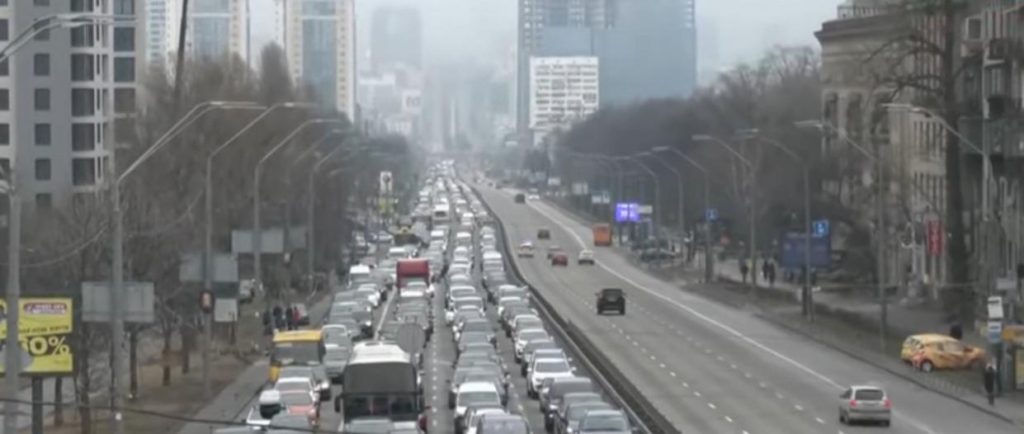
What you see in this picture are immense traffic jams of folks fleeing not Mariupol or Kramatorsk, but Kiev, the capital.
Here is a quick machine translated news update from Col. Cassad:
1. LDNR – the positional nature of the fighting remains, with attempts by the LDNR armies to advance to the borders of the territories occupied by the Armed Forces of Ukraine. 2. The southern direction – the Armed Forces of the Russian Federation retained control over the bridge over the Dnieper at Kherson, repulsing attempts of counterattacks by the Armed Forces of Ukraine.. Fighting in the Antonovsky Bridge area continues. A New Kakhovka is also being held. Melitopol was taken this morning and the advance towards Berdyansk began. 3. Kharkiv direction – fighting continues on the near approaches to Kharkov. Both sides are suffering losses in people and equipment. 4. Sumy direction – the Armed Forces of the Russian Federation took Putivl and passing through Sumy (the battle at the airport continued there today), advanced to Konotop, surrounding the city. Today, attempts to take Akhtyrka continued in order to reach Kharkov from the west. There are Russian roadblocks on the Sumy-Kiev highway. There is an advance to Kiev and Chernihiv. (The APU repelled the attack of the Russian Armed Forces in the Chernihiv direction). 5. Kiev – Gostomel airfield is held by paratroopers. The APU could not dislodge them from there. This morning, tank columns of the Armed Forces of the Russian Federation broke through to the near approaches to Kiev and are close to establishing direct communication with the landing. The AFU is preparing a counterattack, stating that another landing will be thrown out in the Gostomel area today. The Pentagon says that Kiev will fall in the coming days. After 10 o’clock shooting was heard in the city. Also, according to the statement of the Armed Forces of the Armed Forces of the Russian Federation, the landing was thrown to the west of Zhytomyr. The Armed Forces of Ukraine are actively undermining bridges on the approaches, trying to slow down the advance of the Armed Forces of the Russian Federation, 6. In the morning, strikes continued on military facilities of the Armed Forces of Ukraine throughout the territory of Ukraine. A Su-27 of the Ukrainian Air Force was shot down over Kiev – according to one version by the Russian air defense system, according to another – by the Ukrainian ones. The downed “Caliber” fell on a residential building in Kiev, but there were no casualties. During the shelling of Gorlovka, a school was hit – 2 teachers were killed. 7. The AFU launched a missile attack on the Millerovo airfield on the territory of the Russian Federation. Damage is reported at the airfield, but there are no losses in aircraft.
What a Chinese home is like
Yeah. It’s pretty much like this. Only, her house is not nearly as messy and cluttered up as mine. You know, having young kids is a real way to “decorate” your home. Video
And in Taiwan, a lesson for everyone
Ukraine’s crisis comic: note the flags, the texts, and the last picture : how US, UK, and EU farewell the stupid Ukraine president after giving him the weapons.
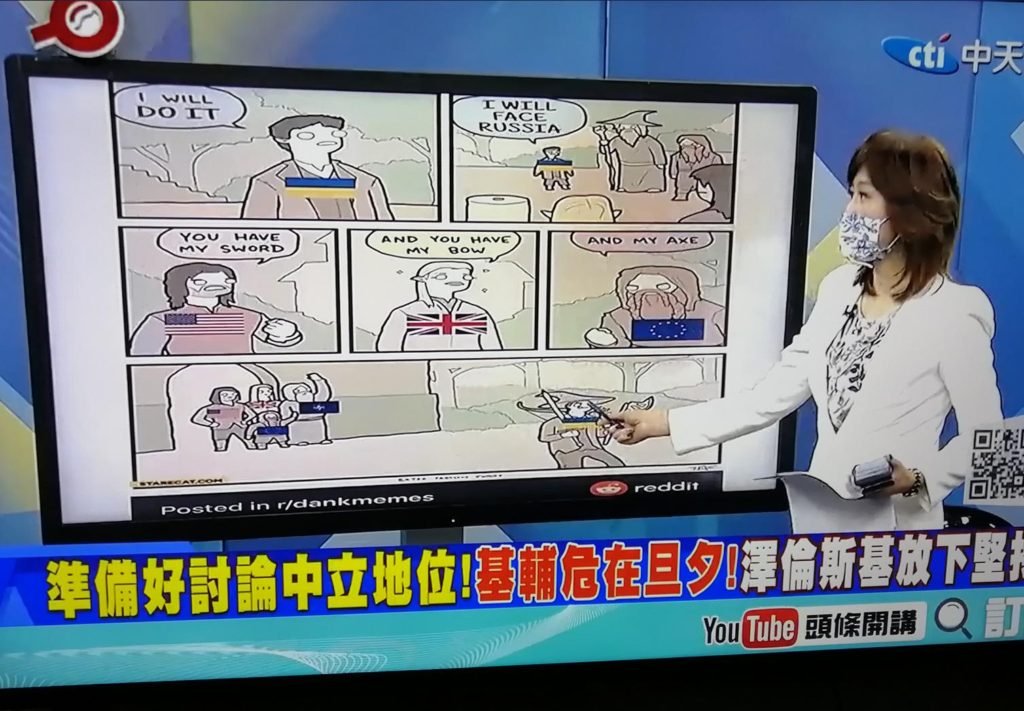
Chinese Experts Uncover Details of NSAs Equation Group’s Bvp47 Covert Hacking Tool
It’s a tad too technical, on my side. You all can skim over the article if you want. Essentially, China’s AI systems detected the behavior of the USA’s NSA hacking tool. It mapped it out, and then algorithims figured it all out. The part that is NOT reported in this article is that the Chinese were able to do so as the enire system is transparent. It’s like trying to find a glass stature submerged in ice cube water.

Researchers from China’s Pangu Lab have disclosed details of a “top-tier” backdoor put to use by the Equation Group, an advanced persistent threat (APT) with alleged ties to the cyber-warfare intelligence-gathering unit of the U.S. National Security Agency (NSA).
Dubbed “Bvp47” owing to numerous references to the string “Bvp” and the numerical value “0x47” used in the encryption algorithm, the backdoor was extracted from Linux systems “during an in-depth forensic investigation of a host in a key domestic department” in 2013.
The defense research group codenamed the attacks involving the deployment of Bvp47 “Operation Telescreen,” with the implant featuring an “advanced covert channel behavior based on TCP SYN packets, code obfuscation, system hiding, and self-destruction design.”
Bvp47 is said to have been used on more than 287 targets in the academia, economic development, military, science, and telecom sectors located in 45 countries, mainly in China, Korea, Japan, Germany, Spain, India, and Mexico, all the while going largely undetected for over a decade.
The elusive backdoor is also equipped with a remote control function that’s protected using an encryption algorithm, activating which requires the attacker’s private key – something the researchers said they found in the leaks published by the Shadow Brokers hacker group in 2016.
Pangu Lab is a research project of Pangu Team, which has a history of jailbreaking Apple iPhones dating all the way back to 2014. At the Tianfu Cup hacking contest last year, the white hat hacking team demonstrated several security flaws that allowed for remotely jailbreaking a fully patched iPhone 13 Pro running iOS 15.
The Shadow Brokers leaks
Equation Group, designated as the “crown creator of cyber espionage” by Russian security firm Kaspersky, is the name assigned to a sophisticated adversary that’s been active since at least 2001 and has used previously undisclosed zero-day exploits to “infect victims, retrieve data and hide activity in an outstandingly professional way,” some of which were later incorporated into Stuxnet.
The attacks have targeted a variety of sectors in no less than 42 countries, counting governments, telecom, aerospace, energy, nuclear research, oil and gas, military, nanotechnology, Islamic activists and scholars, media, transportation, financial institutions, and companies developing encryption technologies.
The group is believed to be linked to the NSA’s Tailored Access Operations (TAO) unit, while intrusion activities pertaining to a second collective known as Longhorn (aka The Lamberts) have been attributed to the U.S. Central Intelligence Agency (CIA).
Equation Group’s malware toolset became public knowledge in 2016 when a group calling itself the Shadow Brokers leaked the entire tranche of exploits used by the elite hacking team, with Kaspersky uncovering code-level similarities between the stolen files and that of samples identified as used by the threat actor.
Bvp47 as a covert backdoor
The incident analyzed by Pangu Lab comprises two internally compromised servers, an email and an enterprise server named V1 and V2 respectively, and an external domain (identified as A), sporting a novel two-way communication mechanism to exfiltrate sensitive data from the systems.
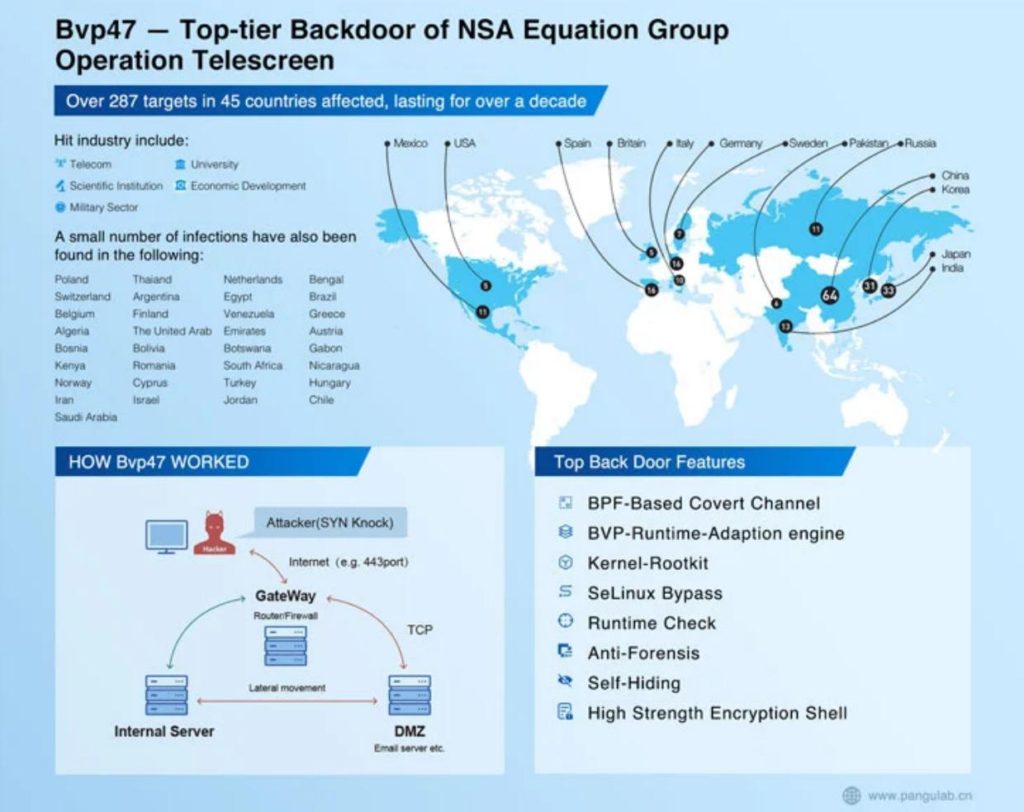
“There is abnormal communication between external host A and the V1 server,” the researchers said. “Specifically, A first sends a SYN packet with a 264-byte payload to port 80 of the V1 server, and then the V1 server immediately initiates an external connection to the high-end port of the A machine and maintains a large amount of exchange data.”
Simultaneously, V1 connects to V2 via the SMB service to perform a number of operations, including logging in to the latter with an administrator account, trying to open terminal services, enumerating directories, and executing PowerShell scripts through scheduled tasks.
V2, for its part, also connects to V1 to retrieve a PowerShell script and an encrypted second-stage payload, the encrypted execution results of which are sent back to V1, which, according to the researchers, “acts as a data transfer between the A machine and the V2 server.”
The Bvp47 backdoor installed on the servers consists of two parts, a loader which is responsible for decoding and loading the actual payload into memory. “Bvp47 generally lives in the Linux operating system in the demilitarized zone that communicates with the Internet,” the researchers said. “It mainly assumes the core control bridge communication role in the overall attack.”
Links to the Equation Group
Pangu Lab’s attribution to Equation Group stems from overlaps with exploits contained in a GPG-encrypted archive file published by the Shadow Brokers – “eqgrp-auction-file.tar.xz.gpg” – as part of a failed auction of the cyber weapons in August 2016.

“In the process of analyzing the ‘eqgrp-auction-file.tar.xz.gpg’ file, it was found that Bvp47 and the attacking tools in the compressed package were technically deterministic, mainly including ‘dewdrops,’ ‘suctionchar_agents,’ ‘tipoffs,’ ‘StoicSurgeon,’ ‘incision’ and other directories,” the researchers explained.
“The ‘tipoffs’ directory contains the RSA asymmetric algorithm private key used in the Bvp47 covert channel [for] command execution and other operations. On this basis, it can be confirmed that Bvp47 is from [the] Equation group.”
The findings mark the second time hitherto undocumented malware developed by the Equation Group has come to light in as many months. In late December 2021, Check Point Research disclosed details of a diagnostic utility called “DoubleFeature” that’s used in conjunction with the DanderSpritz malware framework.
“Judging from the attack tools related to the organization, including Bvp47, Equation group is indeed a first-class hacking group,” the researchers concluded.
“The tool is well-designed, powerful, and widely adapted. Its network attack capability equipped by zero-day vulnerabilities was unstoppable, and its data acquisition under covert control was with little effort. The Equation Group is in a dominant position in national-level cyberspace confrontation.”
A most outstanding Interview
It truly is. Man, oh man. No holding back. This is THE Scott Ritter that was sent to Iraq to find WMD’s and got in all sorts of trouble by the Bush Administration when he couldn’t find any. Man, he lets loose!
Scott Ritter. Video on You-Tube.
KTV scene
This kind of scene is fairly common when you go to a Business KTV. The girls will dance, and feed your food like grapes, strawberries, and drinks. They will hold your arm and be playful with you. video
Be the Rufus
Or be nothing; selfish and alone. video 5MB
Archdukes across Europe hiring extra security details
Better safe than sorry.
By Cobré Commandreé
BRUSSELS — Archdukes across Europe are beefing up their security details following a full-scale Russian attack on Ukraine.
“We’ve seen this picture show before, ahem,” claimed Archduke Peter Von Fishburn-Waldrop III, of County Hampshire, as he took snuff. “Whenever a world war is about to break out, one of us is inevitably assassinated, ahem.”
Archdukes are contracting mercenaries, hirelings, sell-swords, adventurers-about-town, and various other soldiers of fortune to round out their security details.
“Aye, it be good for business, make no mistake. Surely none of us wish to see an Archduke what with his life-force pourin’ out of his noggin, but we got bills to pay too, mind you,” said Captain John Ninefingers, leader of the famed Free Company.
Students of history will remember that the assassination of Archduke Franz Ferdinand precipitated World War I, called The Great War at the time, fought by various European powers. Archdukes fear that with the Ukrainian crisis, it’s only a matter of time before history repeats itself.
“One day you’re collecting rent from peasants, ahem, or getting promoted in the military despite no accomplishments, and the next day, ahem, you get assassinated by a young upstart who wants freedom from your imperial empire,” muttered Archduke Yannis Belagrovstad, of the Gutenberg Province. “What nerve! What cheek!”
The motley collection of heirs-apparent is leaving nothing to chance. The finest technologies have been employed to ensure the safety of the Archduke corps throughout Europe.
“We attempted to develop a motorcar that was consistently surrounded by a moat as it traveled, ahem, but the peasants complained that it was too much digging,” mused Archduke Johannes Reberg, of the Kaiserschoten Kaserne. “And isn’t that just like a peasant?”
When asked for comment, Ursula Gertrud von der Leyen, the current leader of the European Commission, said, “The safety of the Archdukes remains our number one priority. That’s why we’ve diverted troops from Ukraine to stand guard around their four-post beds throughout the night.”
Russian President Vladimir Putin issued a press release Tuesday morning regarding the safety of the Archdukes.
“When it comes to the assassination of Archdukes, it appalls me to think that anyone could be considering such an action,” said Putin, “without me having first ordered it”.
Checkered sweater for the tropics
Here, in the tropics, it’s HOT. Then there’s the “rainy season” which is HOT and STEAMY. So how do these Chinese girls get around wearing sweaters? Is it becuase they stay inside the air conditioning all day? Well, maybe so, but also the clothes in China are designed for the environment. Here is a sweater for the tropics. Cool, eh?
MoA – Disarming Ukraine – Day 2
The Russian operations in the Ukraine continue at a moderate pace. Some more troops were committed today. In all the Russian military may have now introduced some 20-40% of its prepared forces.
The Ukrainian military is not so much holding a line but concentrating in and around its bigger cities. It has destroyed some bridges north of Kiev to make an approach more difficult. That will slow down the Russian moves but will not prevent them. Russia’s military is famously good at setting up combat bridges.
So far the Russians have used their artillery sparsely. An exception was last night near Kharkiv in the northeast of Ukraine where a strike by multiple launcher artillery systems (MLRS) hit some area target with yet unknown results.
A 13 minutes long video from a highway drive near Kherson, a city north of Crimea, shows nearly 100 destroyed Ukrainian trucks and tanks. These are likely victims of air attacks.
If this map from a Turkish think tank source is correct the Russian troops did not attempt much deeper strikes today but mostly consolidated their frontline.
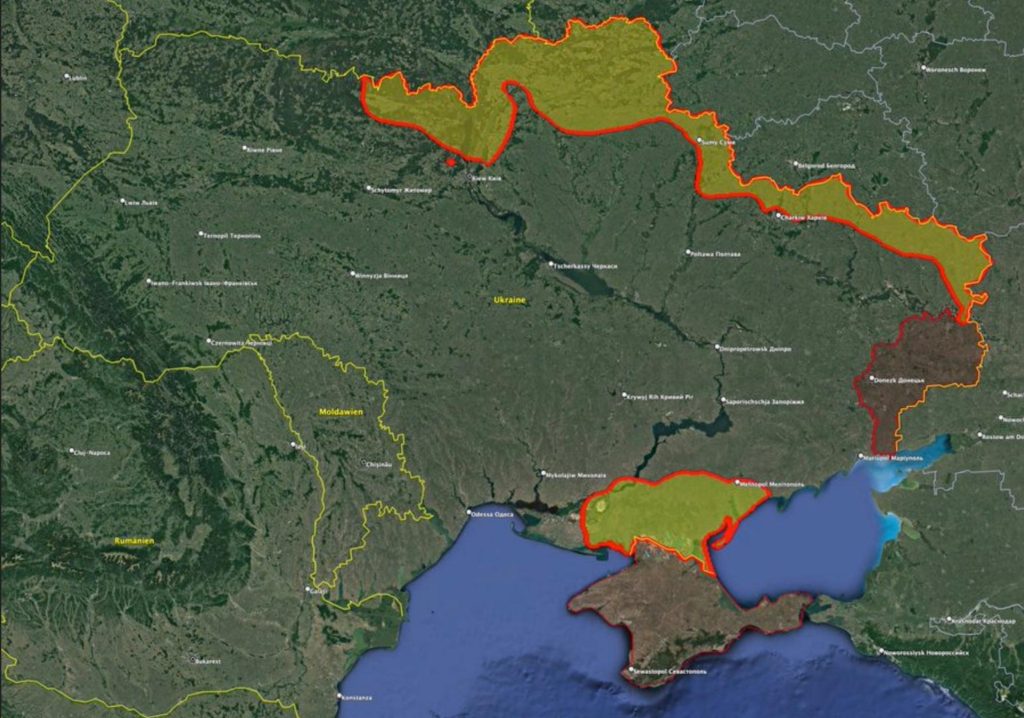
This map from Janes shows less progress. But it also has not marked the Donbas area in the southeast which is held by pro-Russian forces.

Russia’s President has called on the Ukrainian military to overthrow its government. I do not think he believes that will happen but it is a possibility so why not call for it.
Facebook now allows to praise Ukrainian Nazi groups like the Azov battalion. This was prohibited with Azov previously being in the same category as ISIS. Now these are ‘our guys’.
There are a lot of discussions of sanctions against Russia and every western country is trying to get as much exemptions for its industries as possible . The U.S. has for example exempted everything that has to do with hydrocarbons from its own sanction package. It will still buy Russian oil and will continue to sell drilling equipment to Russia.
The EU countries are still negotiating with themselves. They should be careful with what they do.
Britain has had the stupidity of sanctioning the Russian air carrier Aeroflot. In a counter move Russia prohibited British Airways from flying over Russian territory. Normally all flights from Britain to the Far East cross Russian airspace. These will now have to be redirected to other routes which will significantly increase their flight time and fuel burn.
Russia has threatened ‘inconvenient’ counter-sanctions to those who sanction it. Overflight rights are only one of the tools it can use.
NATO has said it will continue to deliver weapons, including air defenses, to the Ukraine. NATO does not have any weapons but some NATO countries seem to strive for a larger war. The U.S. seem willing to sacrifice the Ukraine to create a quagmire for Russia.
Syria was also supposed to become a quagmire for Russia when Russia came to its help. It didn’t turn out that way.
Finally, this is how we handle Trolls here on MM
"Once you cut through the bullshit and understand what's going on, it's easy to predict what will happen. These people and countries acting as attack dogs for the empire must therefore be taught an unforgettable lesson. If you don't put down the rabid dogs, they will get up and bite you again. Therefore, Russia will not take half measures. They will not stop unless the surrender is total, and punishment for the miscreants dealt out accordingly. Otherwise, this operation will be for naught."
If you don’t understand this video, you must have a mental illness. Truth this.
Do you want more?
You can find more articles related to this in my latest index; A New Beginning. And in it are elements of the old, some elements regarding the transition, and some elements that look towards the future.
New Beginnings 3.
Articles & Links
Master Index.
- You can start reading the articles by going HERE.
- You can visit the Index Page HERE to explore by article subject.
- You can also ask the author some questions. You can go HERE to find out how to go about this.
- You can find out more about the author HERE.
- If you have concerns or complaints, you can go HERE.
- If you want to make a donation, you can go HERE.
.


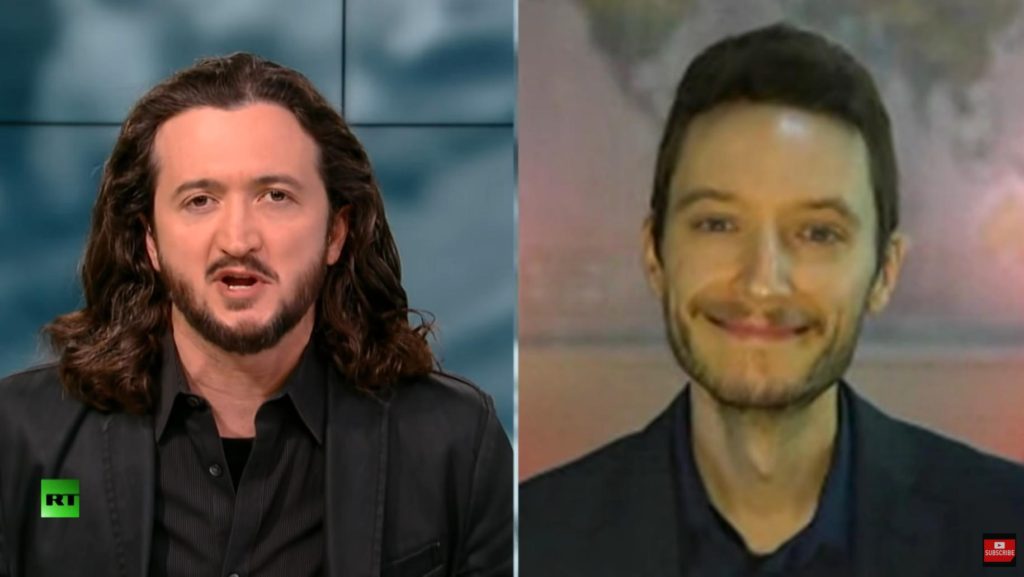
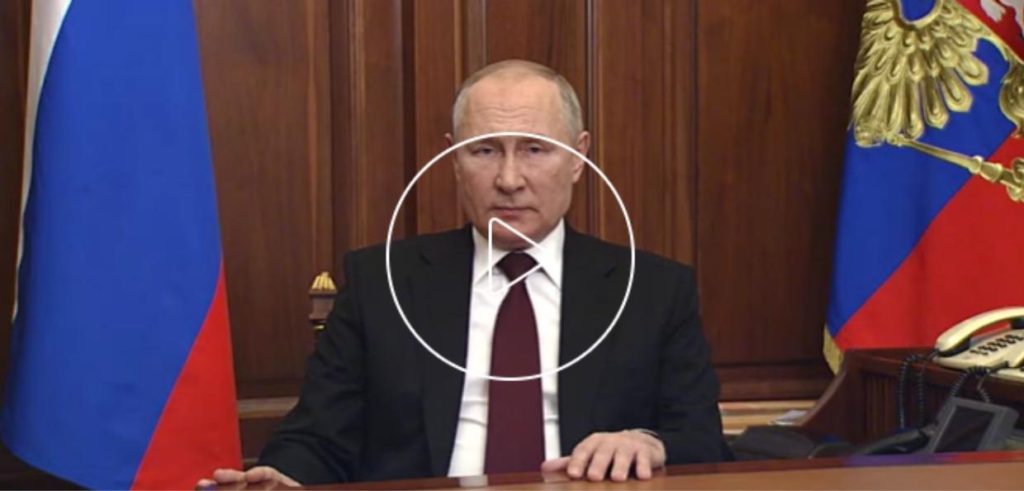




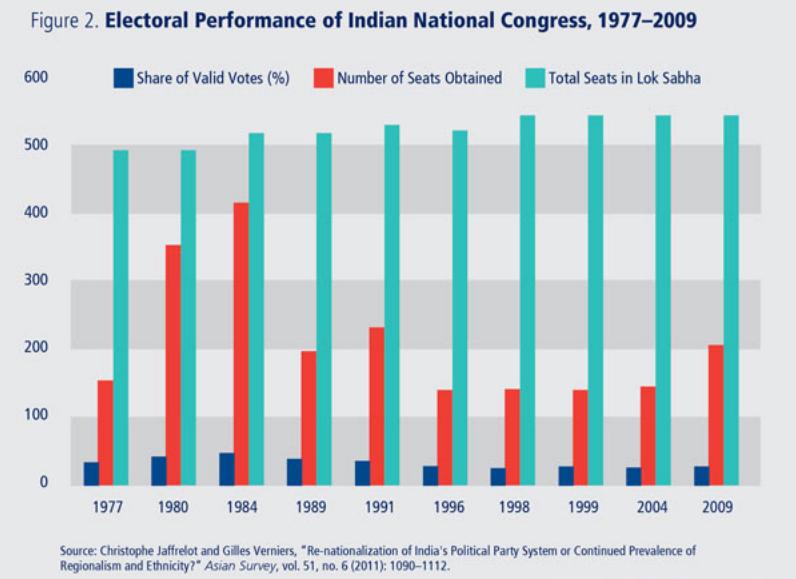




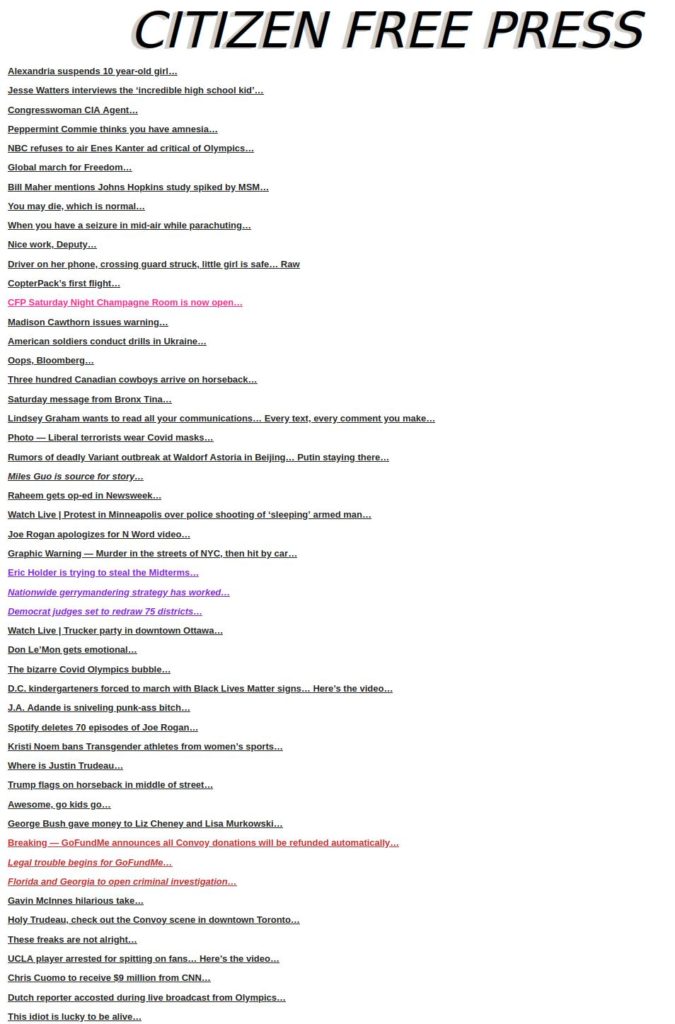
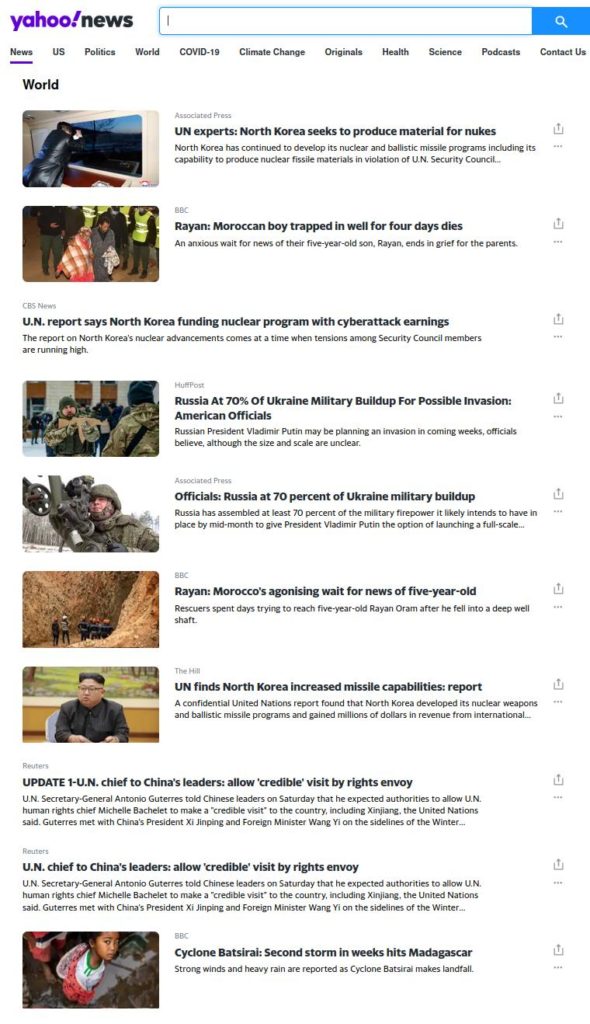



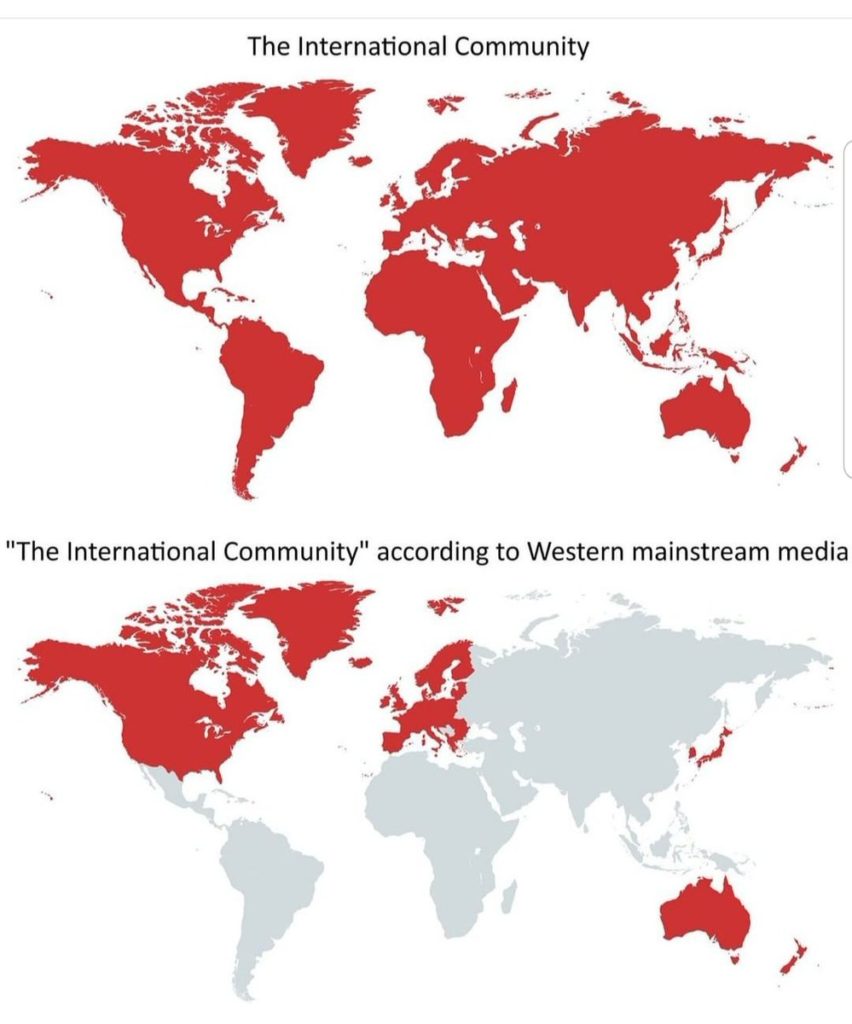
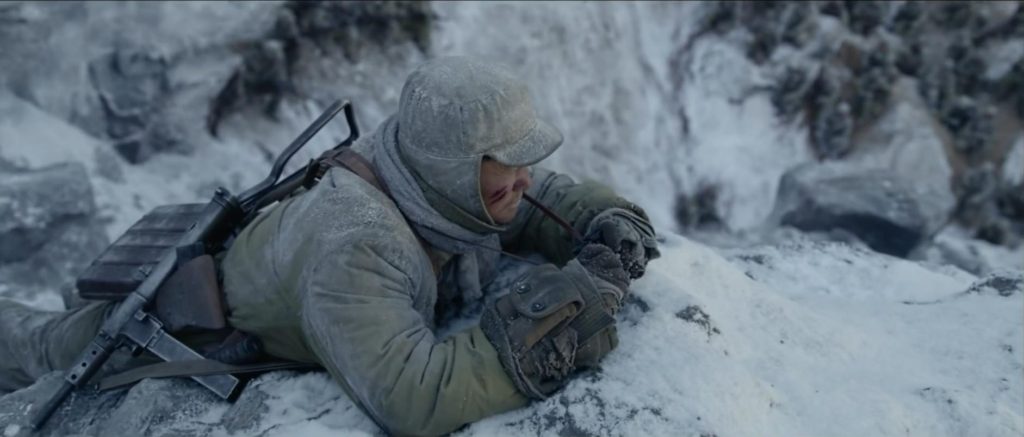
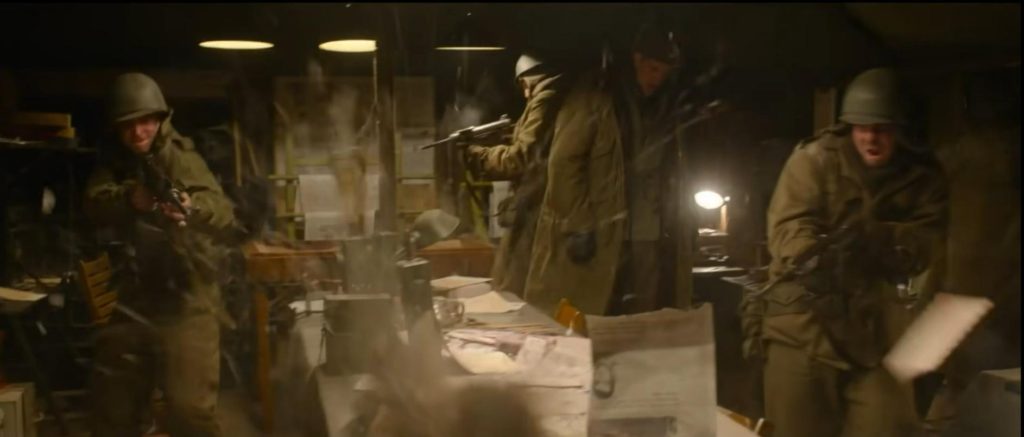
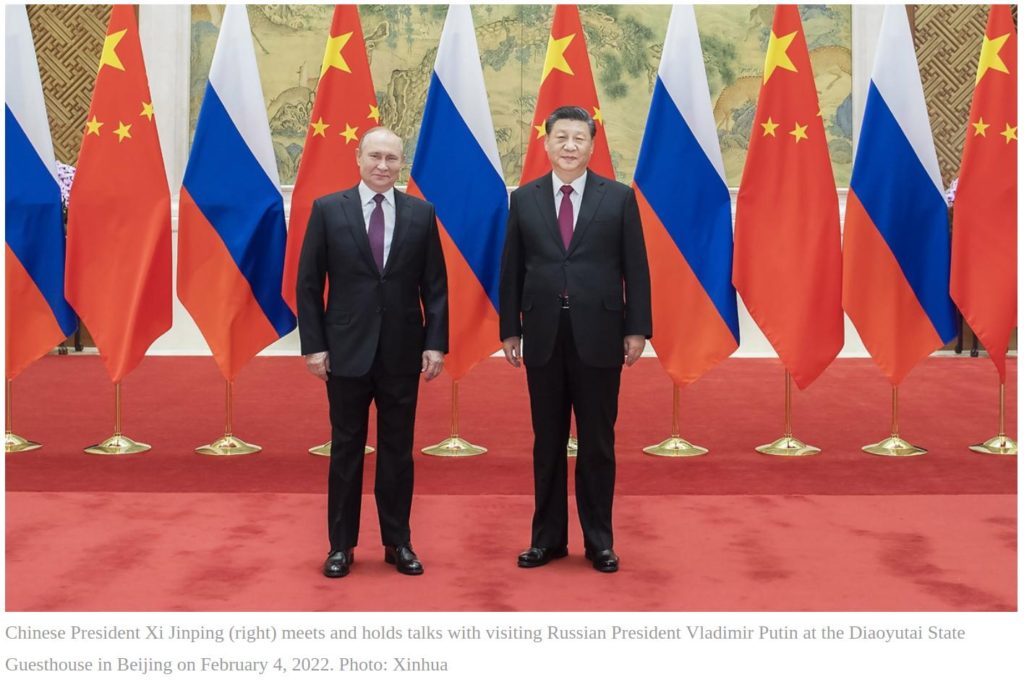
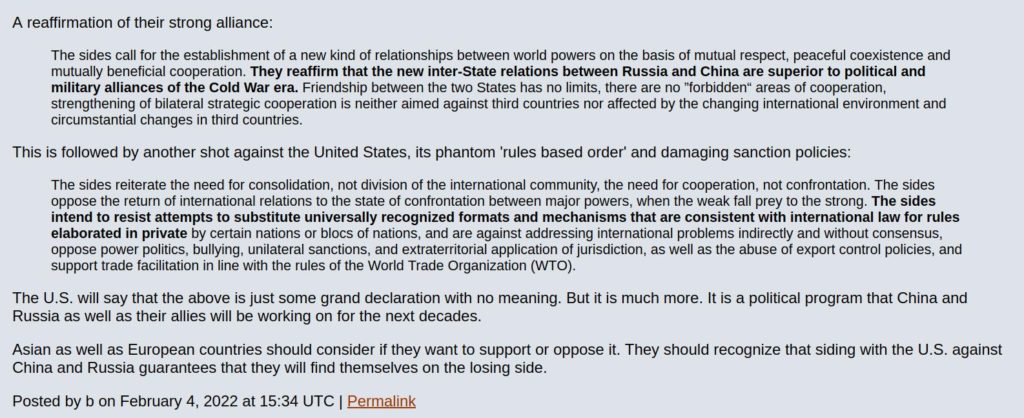





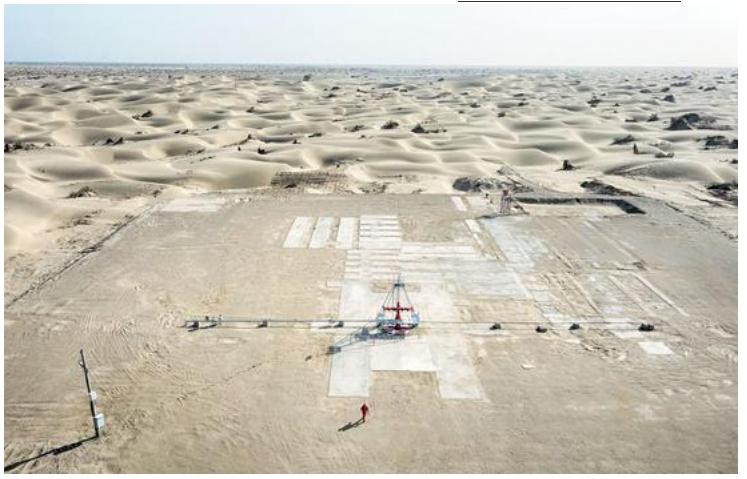

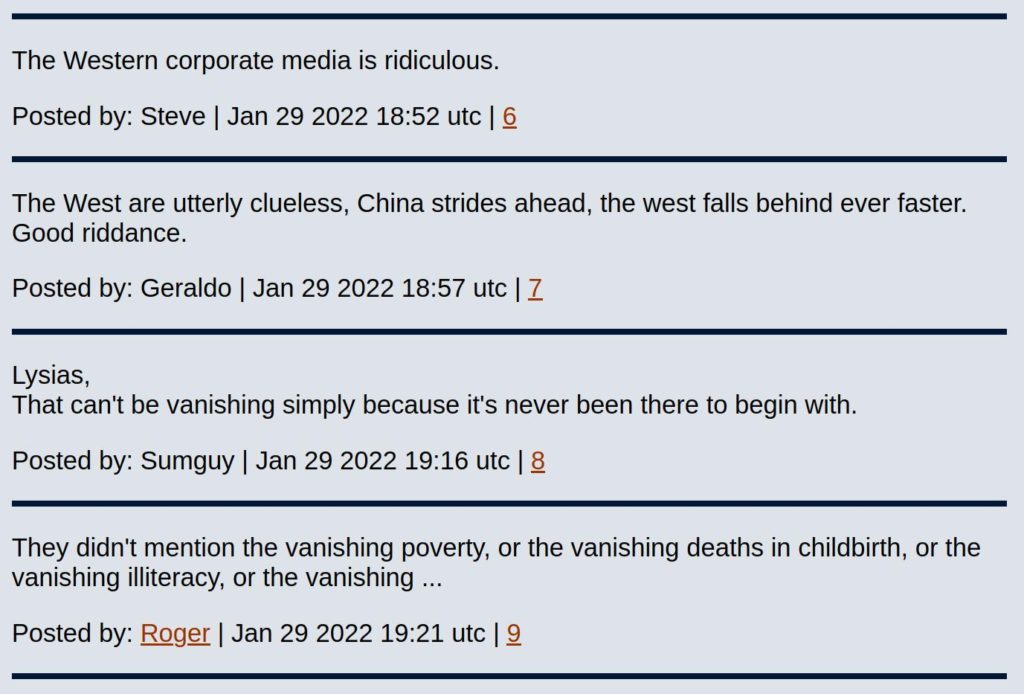
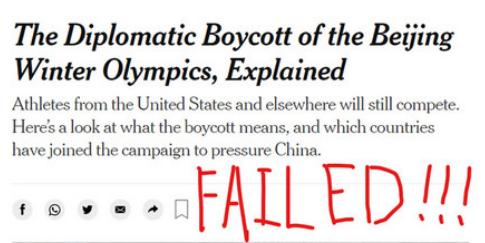
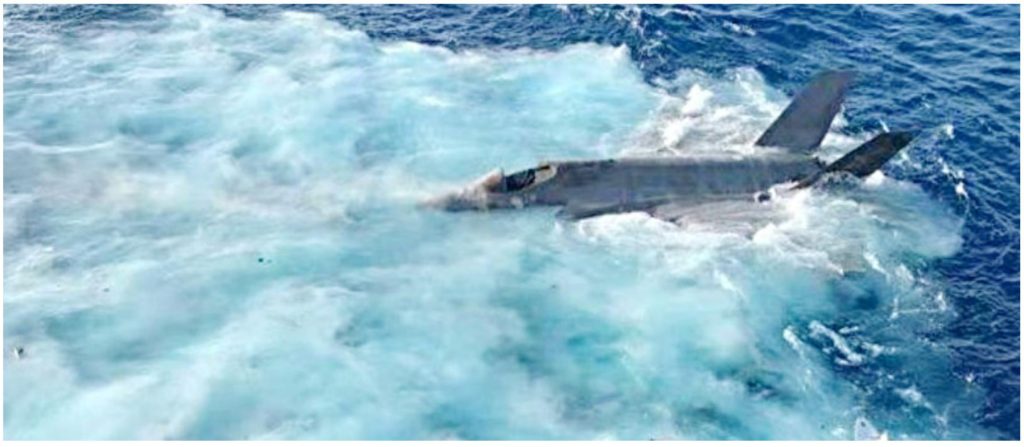
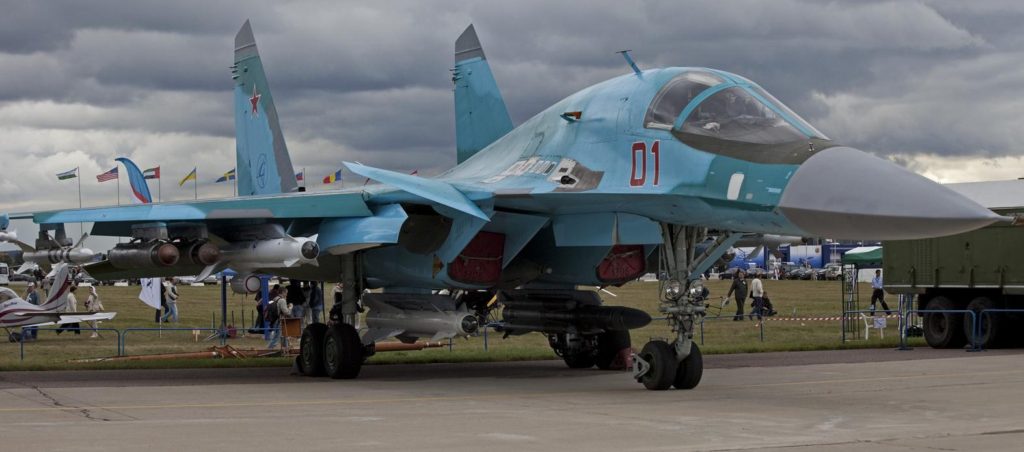

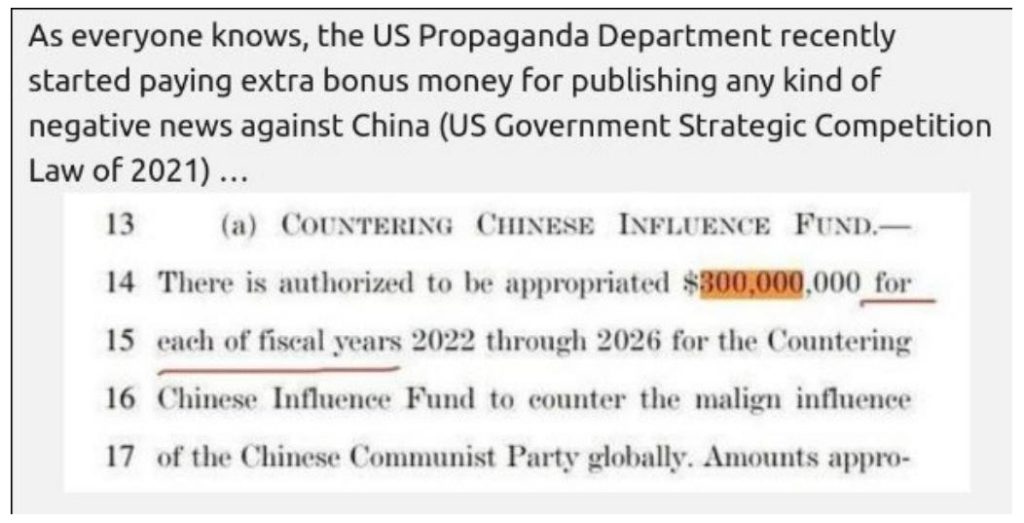
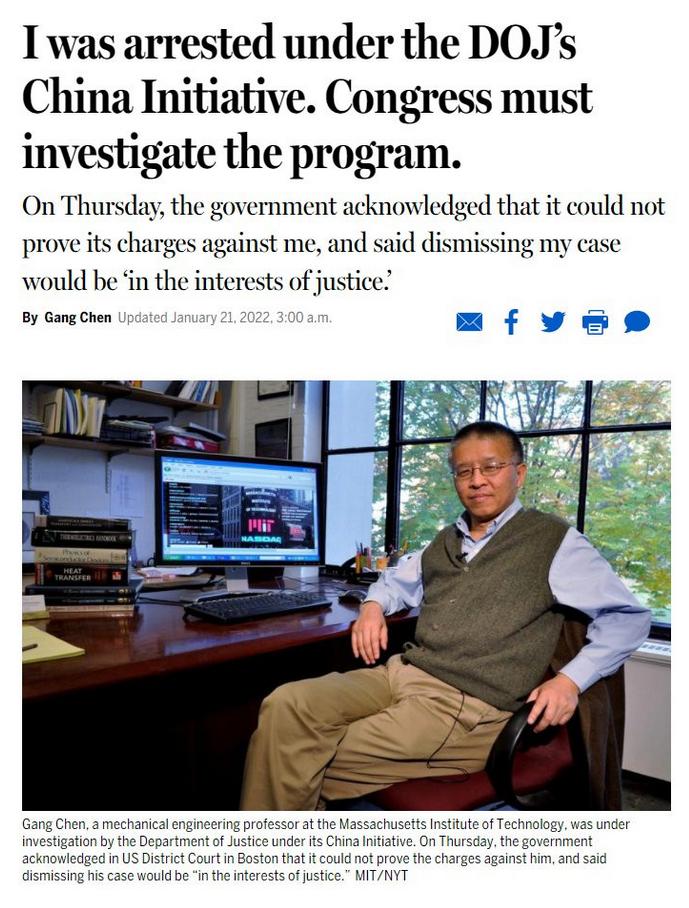
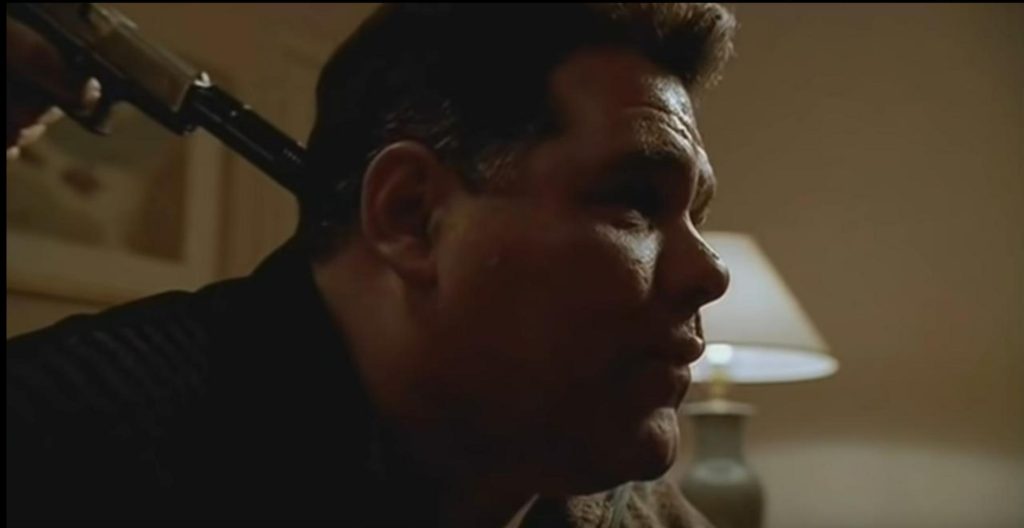

![What’s next between Russia and the United States; a video illustration [1]](https://metallicman.com/wp-content/uploads/2022/01/2022-01-30_13-52BIG-825x510.jpg)

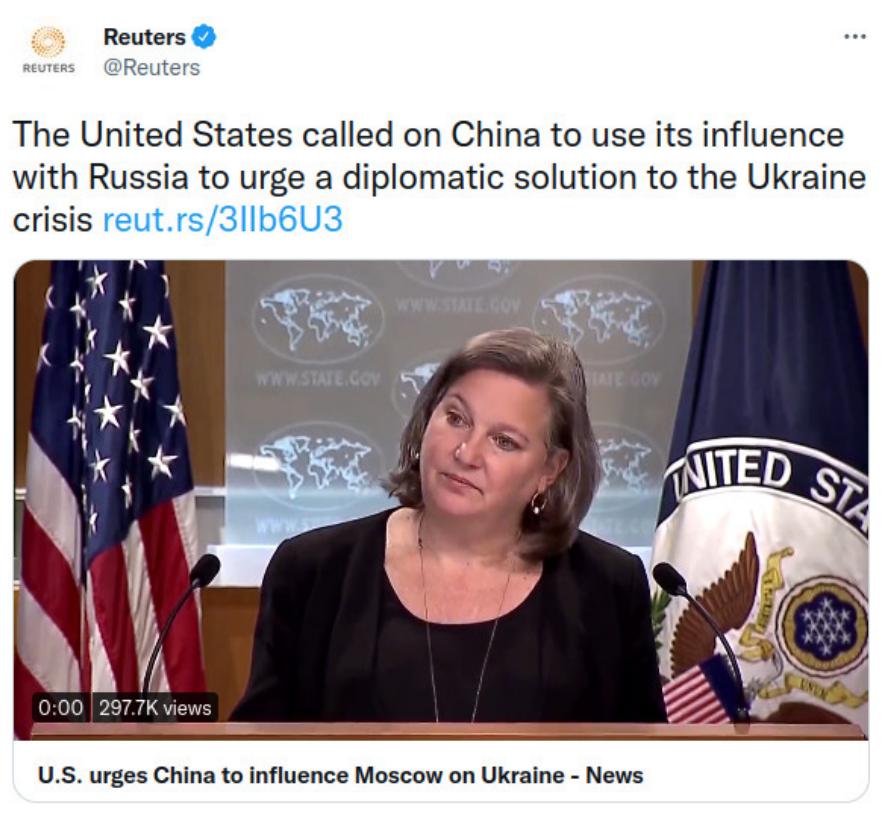




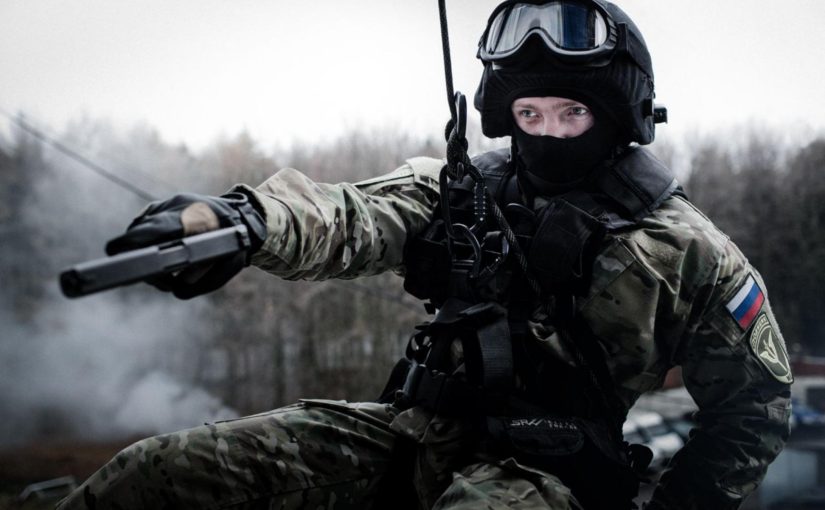




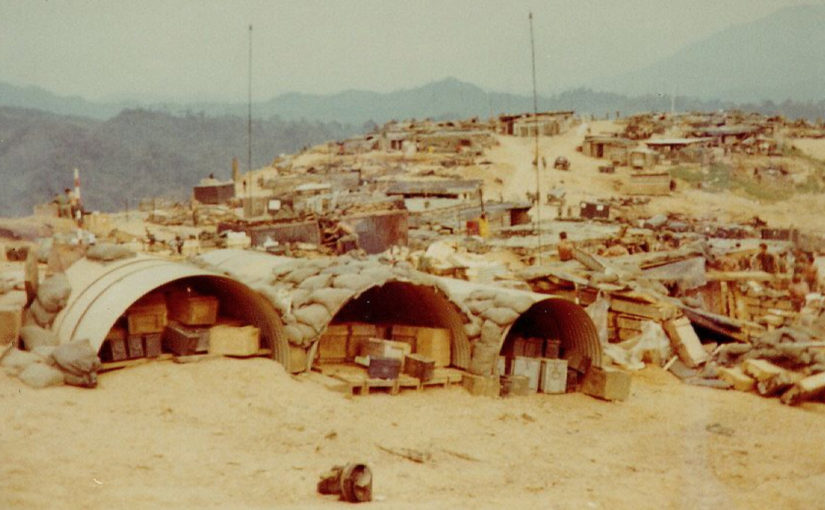
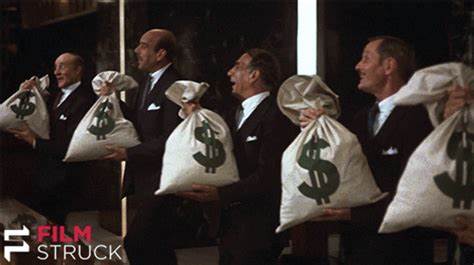
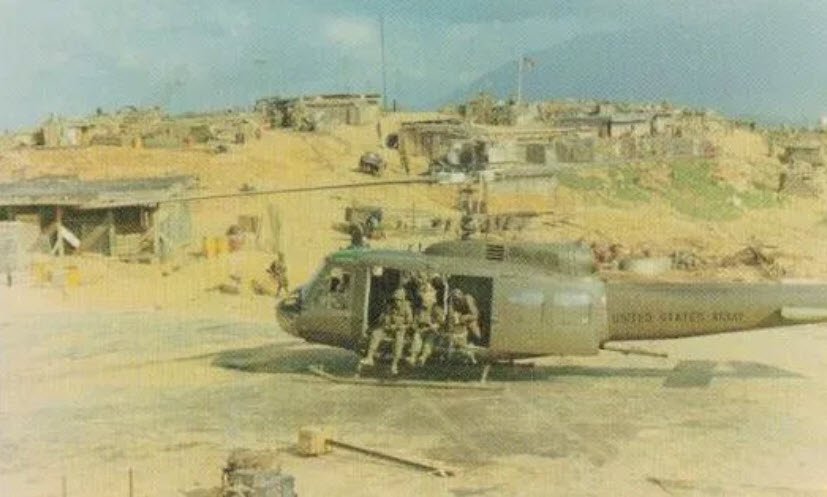
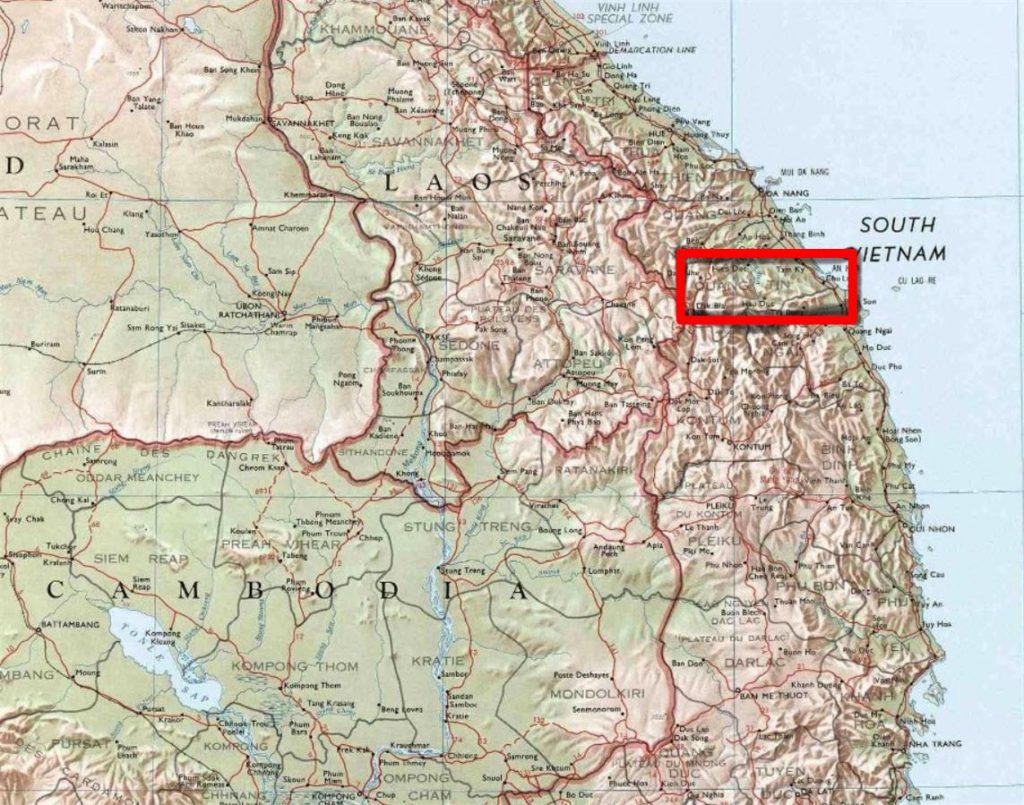
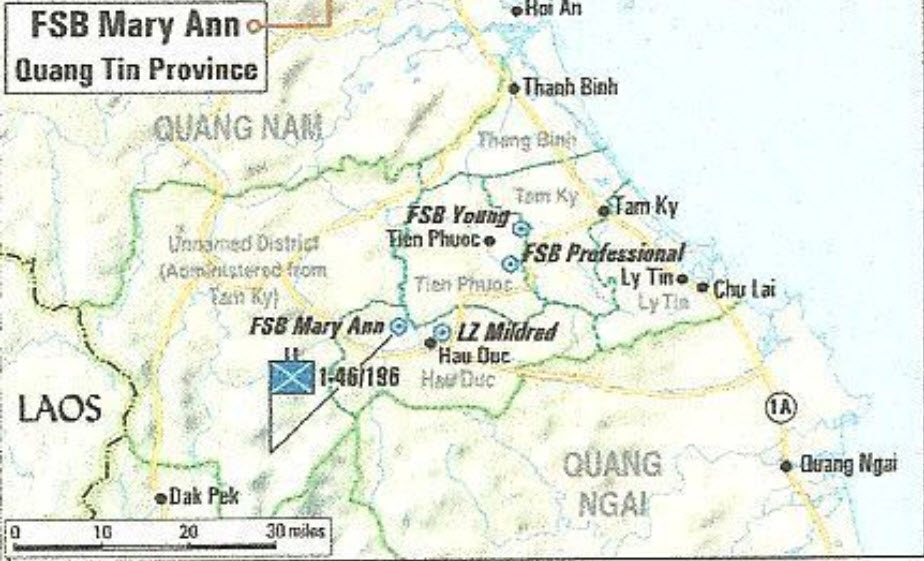
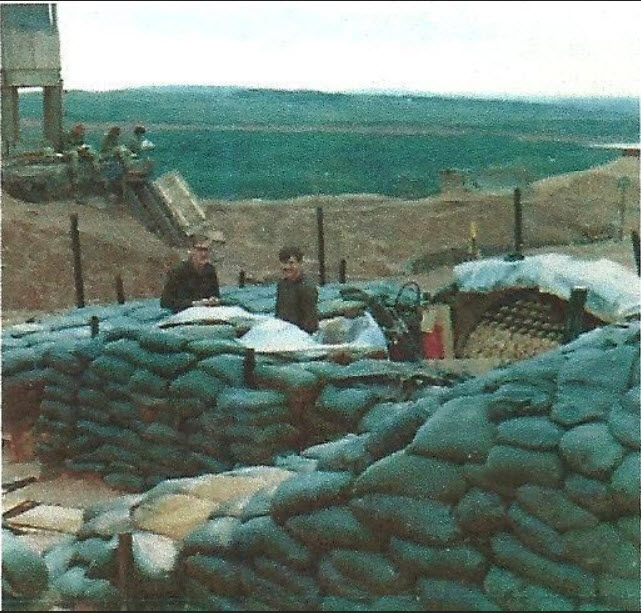
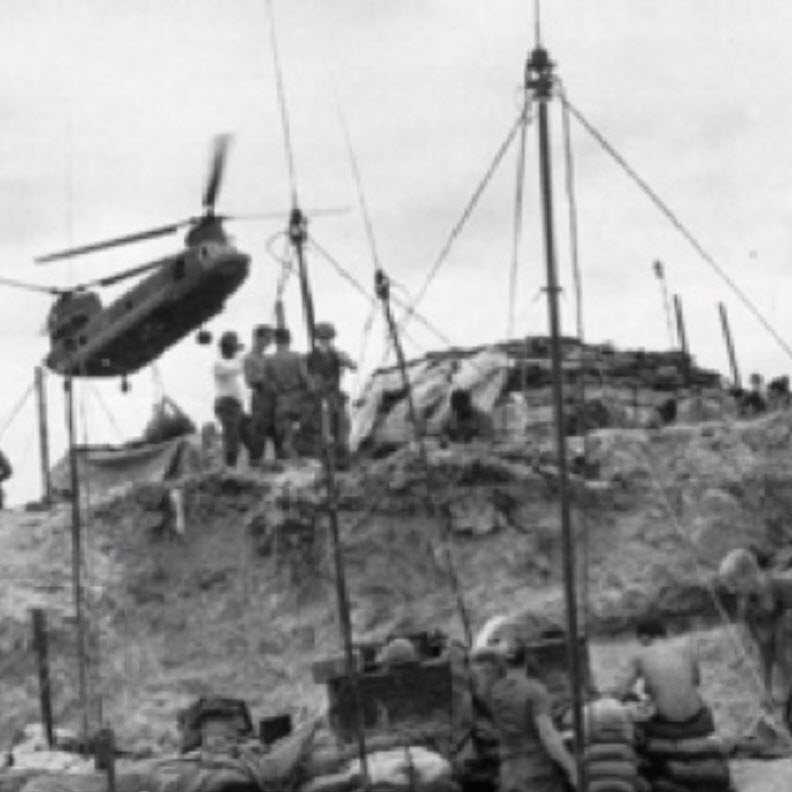
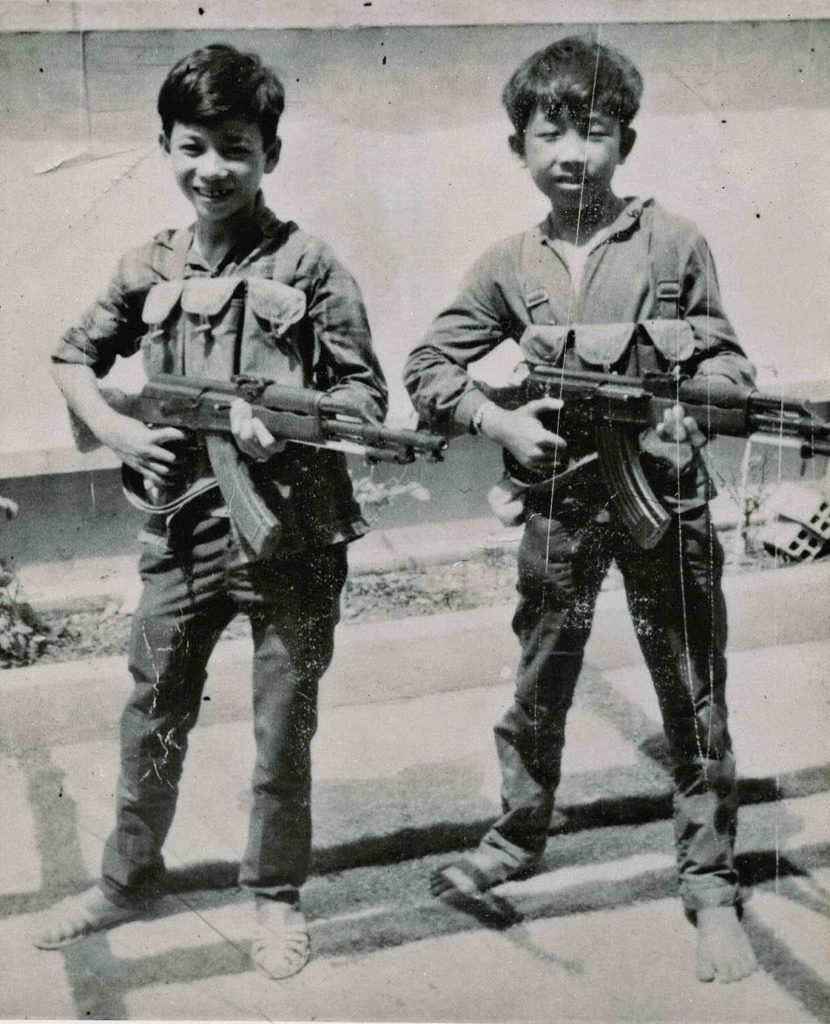
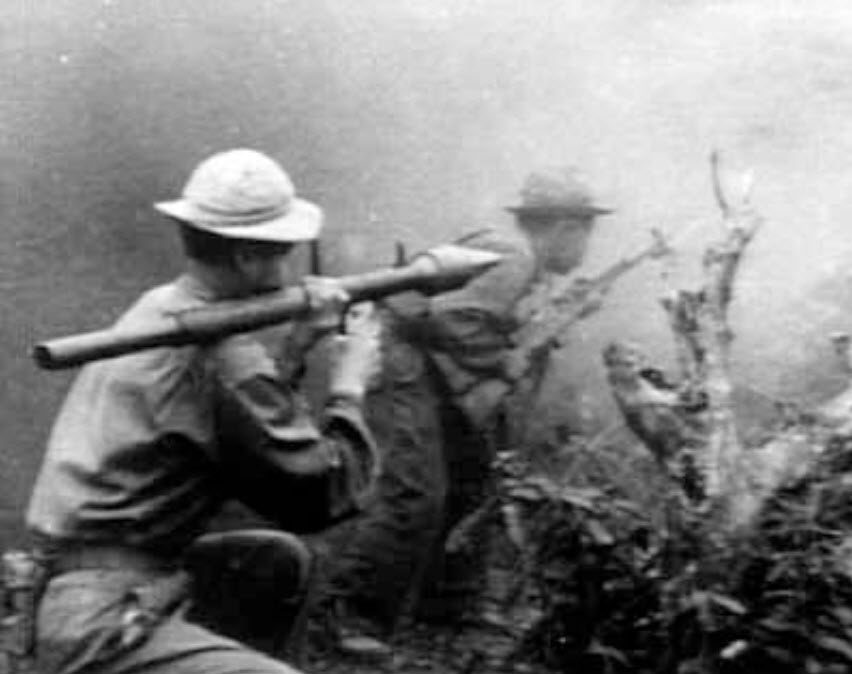
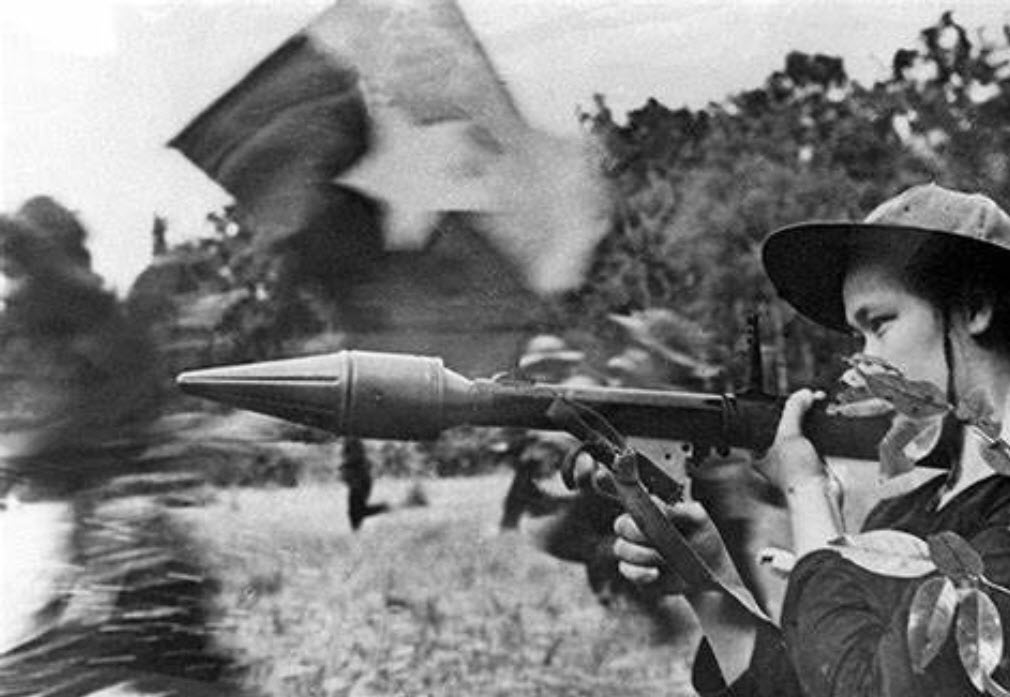
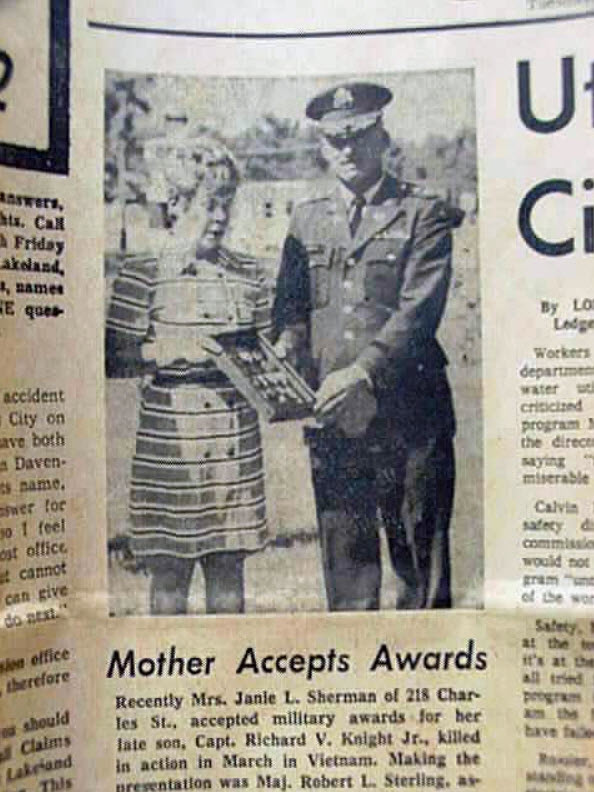
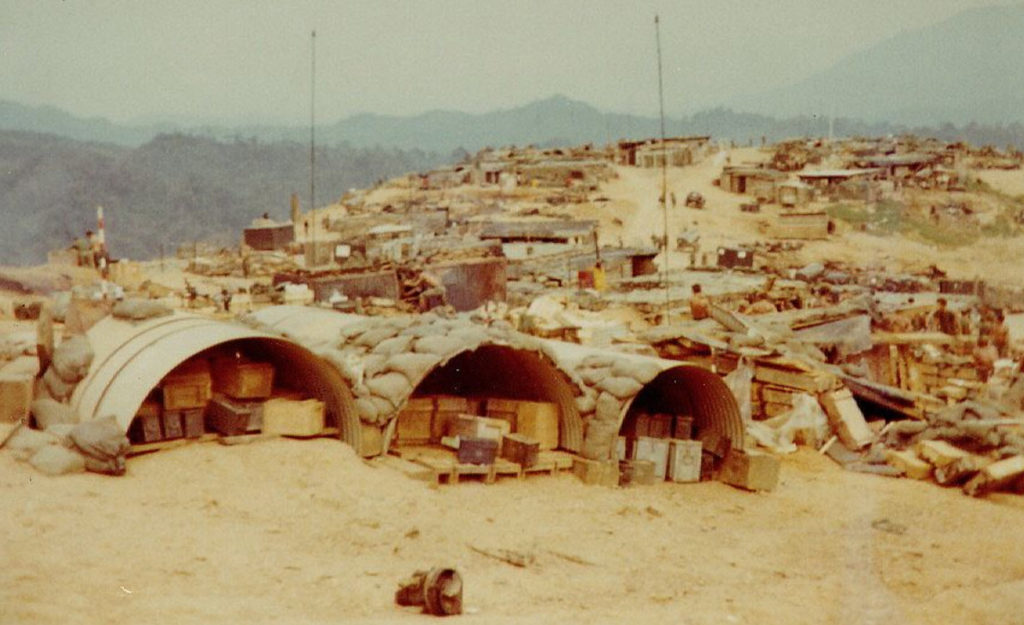
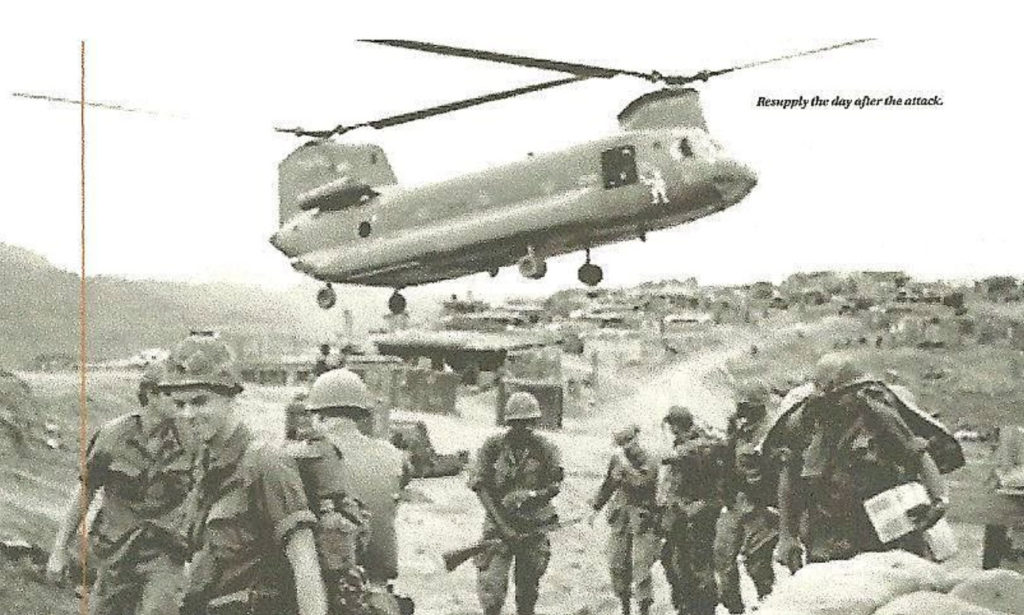
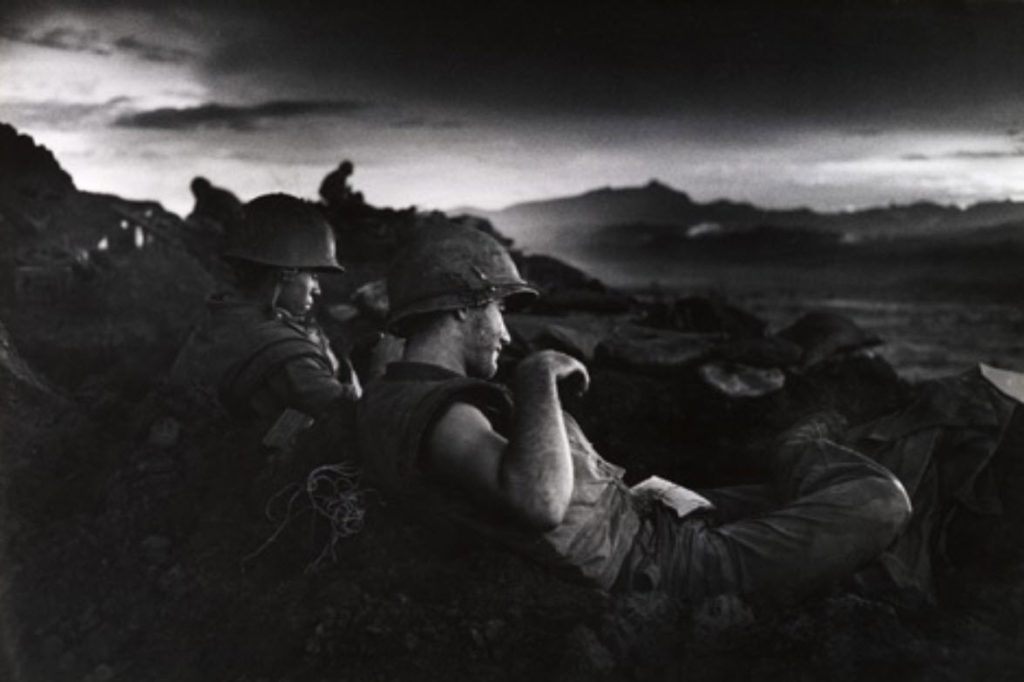
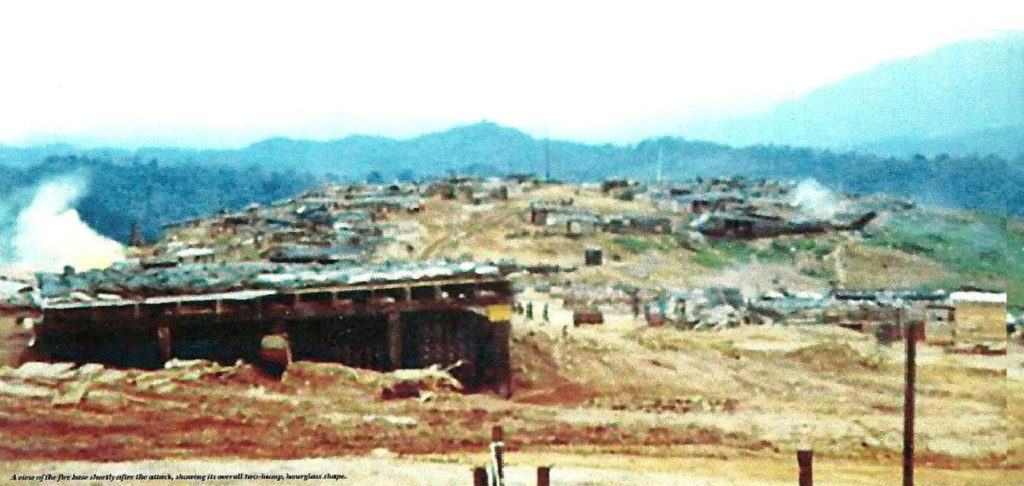
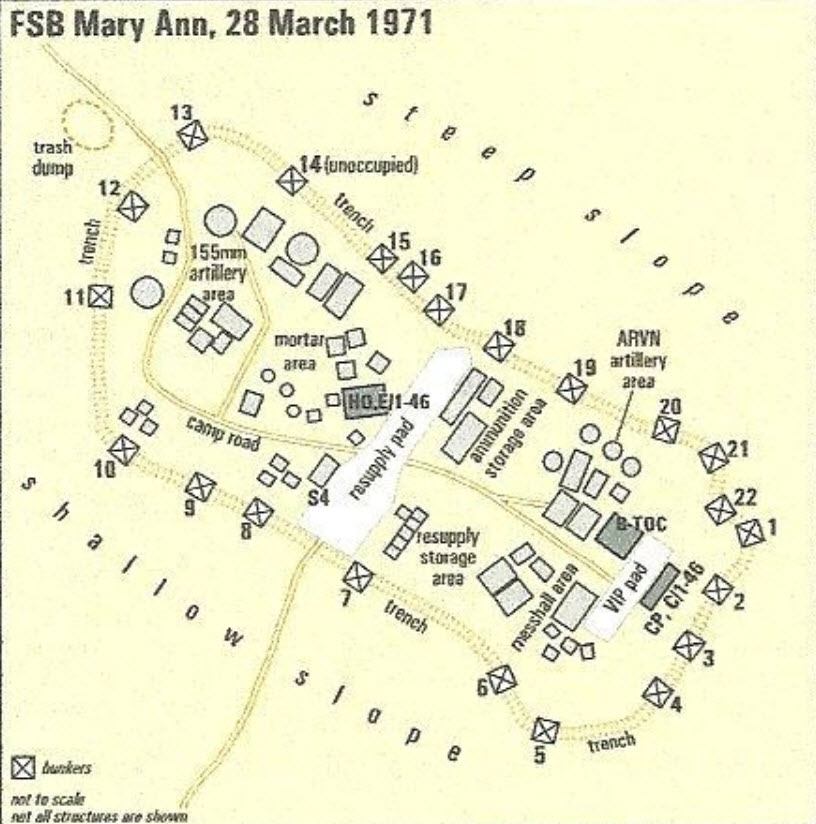
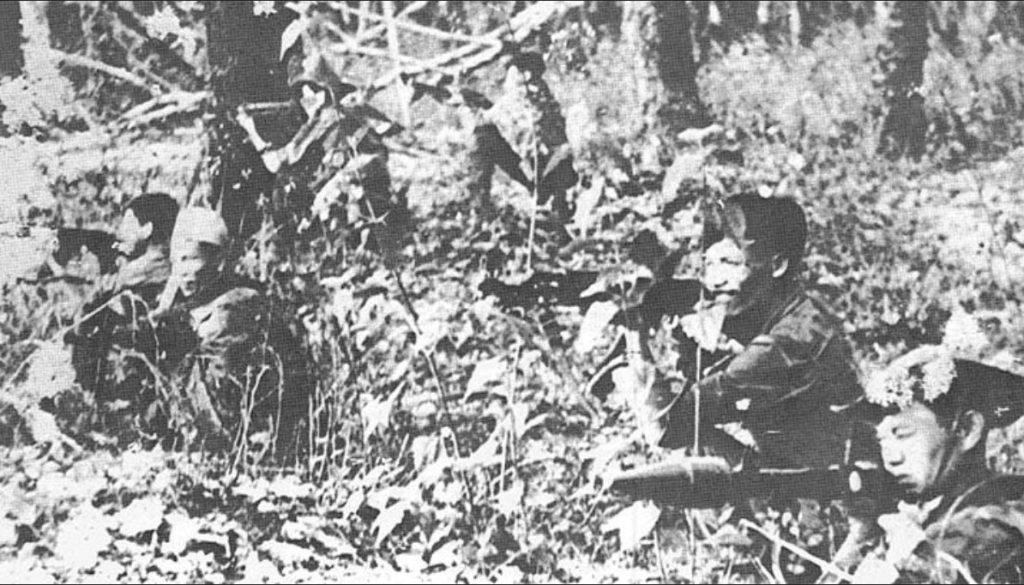
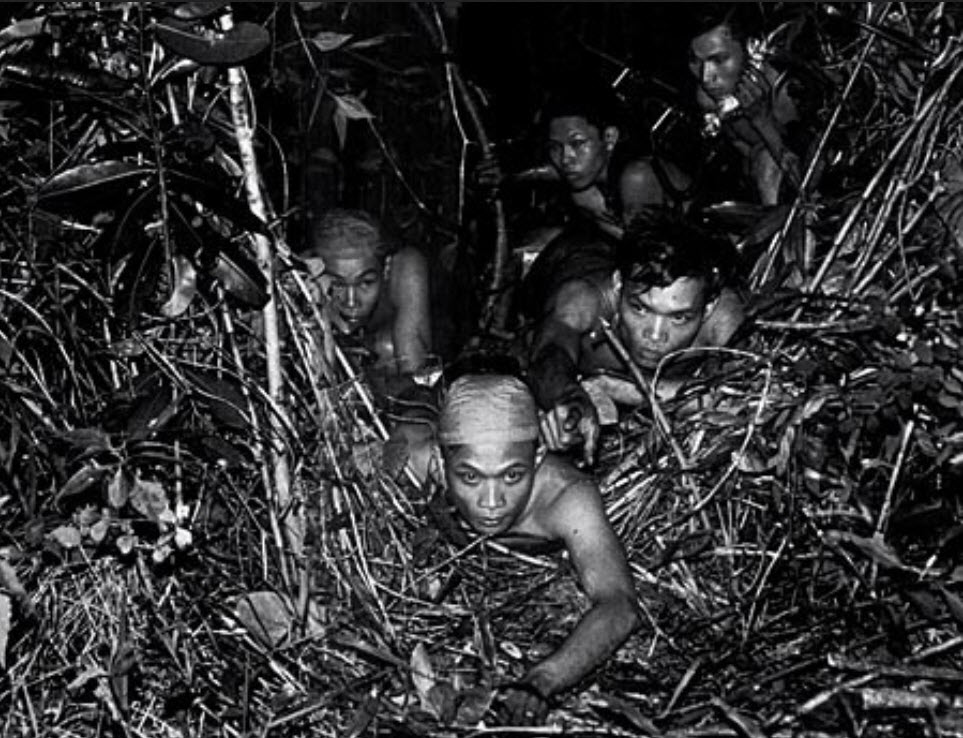
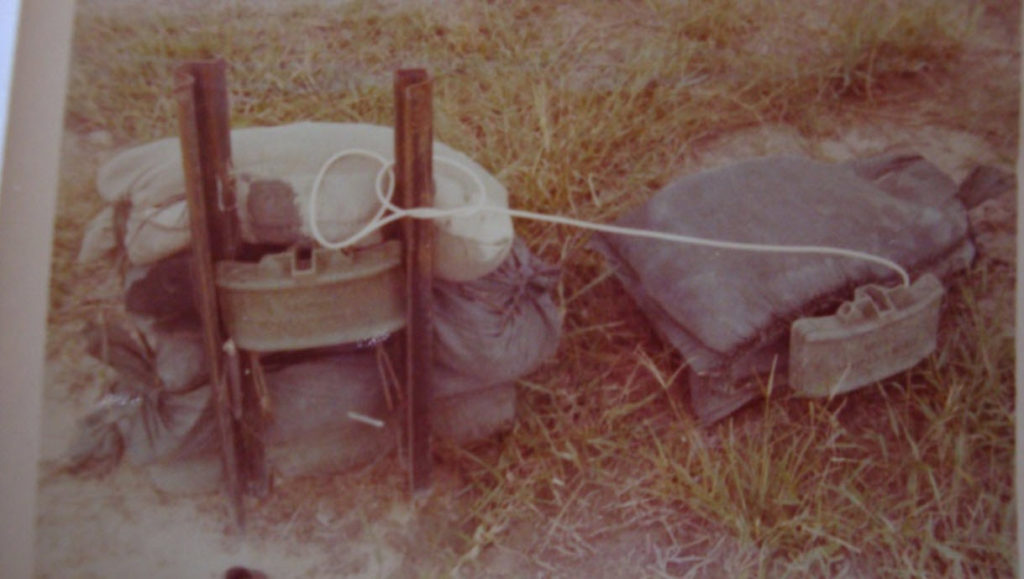
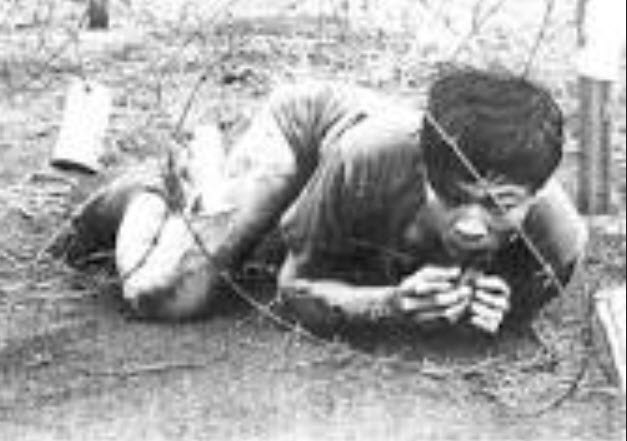
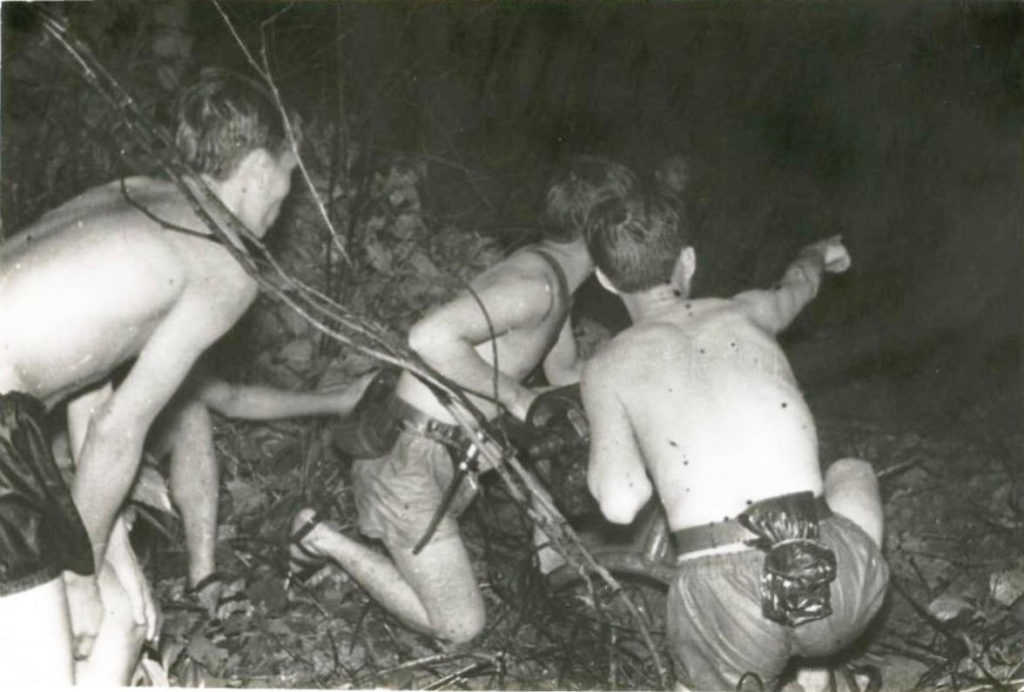
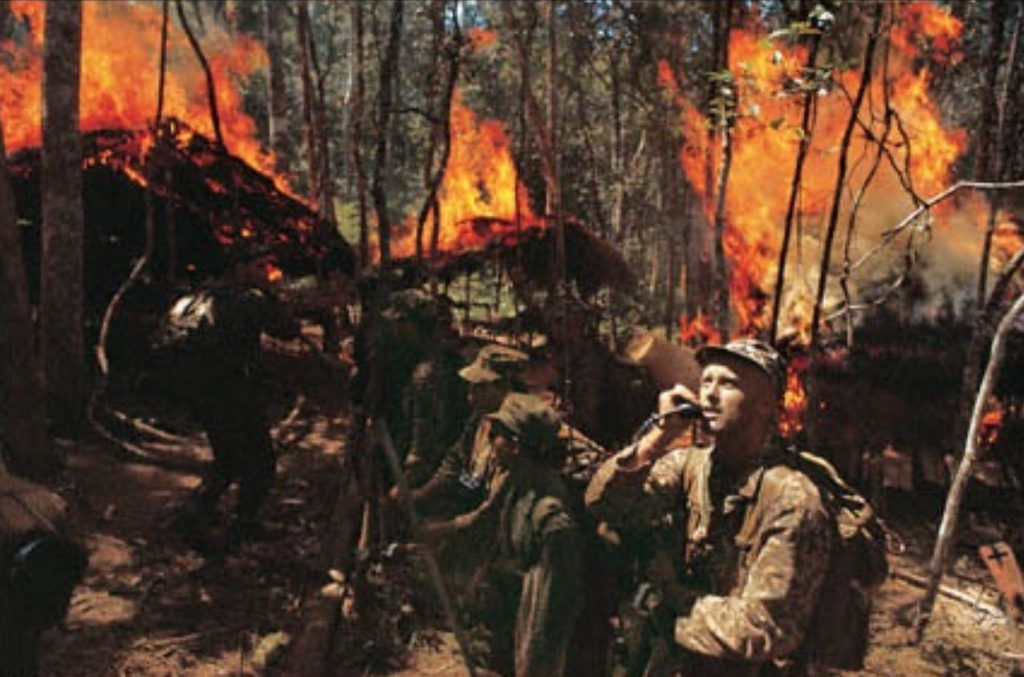
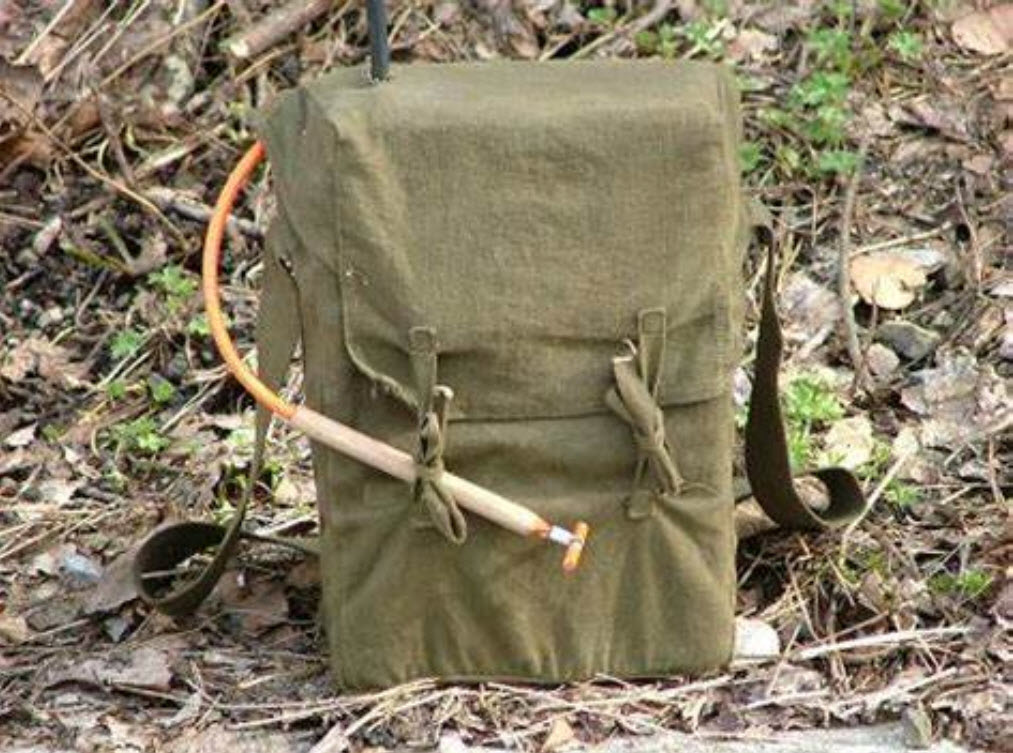
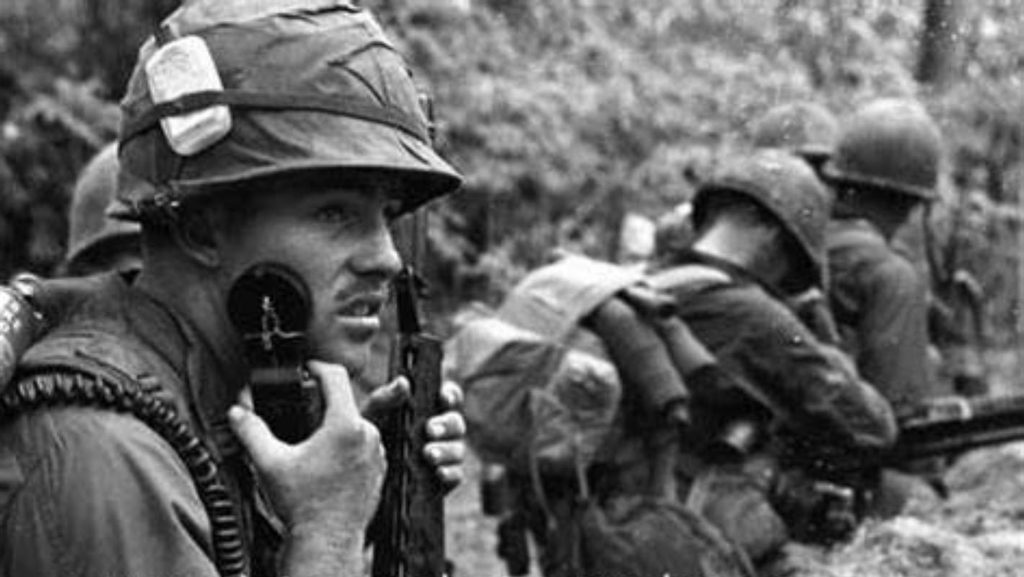
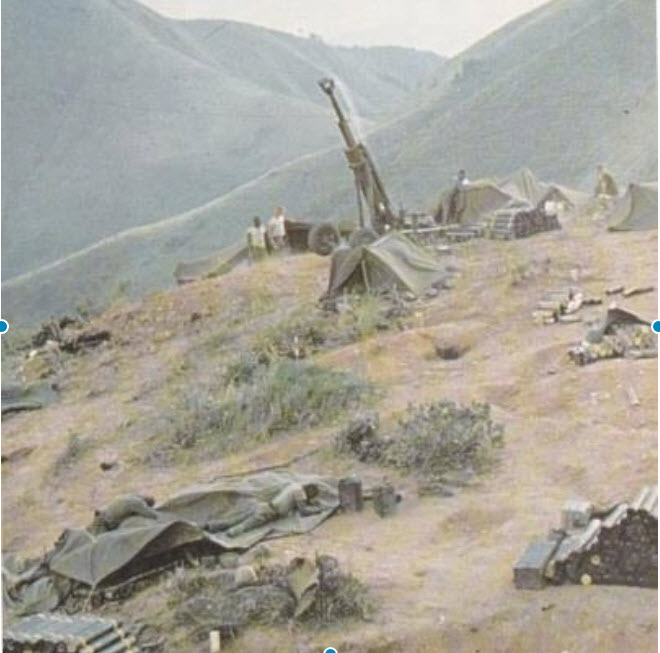
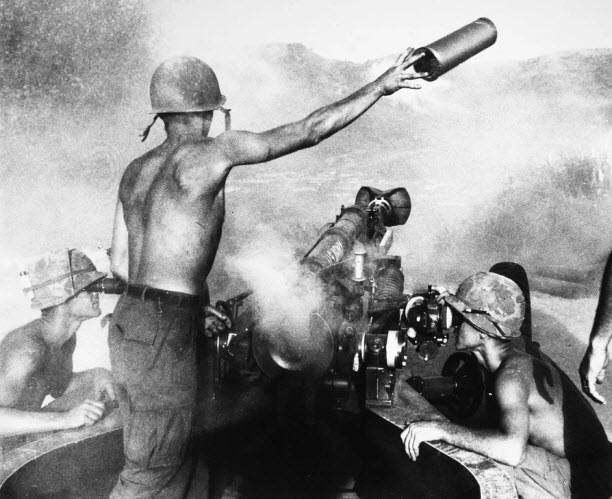

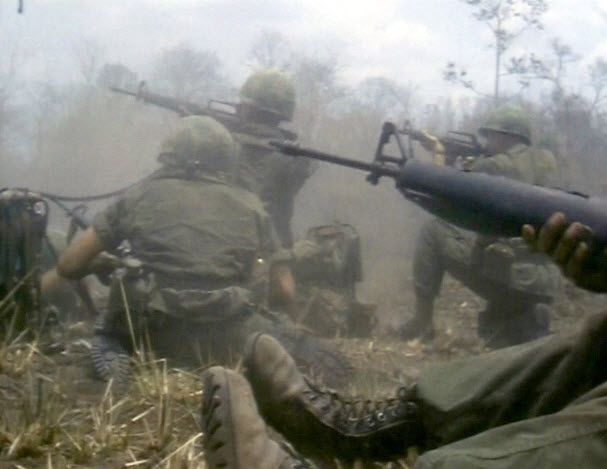
![Specialist 5 Carl Cullers later claimed: ‘[I saw] an ARVN going behind the rifle range. It was more or less a joke at first. One of the cooks said, `Hey Cullers, there’s an NVA down there,’ and I said, `Quit joking,’ and he said, `Wait, and I’ll point him out to you.’ I knew he was an ARVN by his size. He had gone out beyond the rifle range, and down the slope for about 20 minutes. I took it for granted he had gone down to defecate.’](https://metallicman.com/wp-content/uploads/2020/01/SNAG-X0052.jpg)
